
Welcome to iGrow News, Your Source for the World of Indoor Vertical Farming
A National Security Perspective On Vertical Farming
By Dr. Robbin Laird - - Wednesday, October 10, 2018
Since the very earliest wars, battlefield commanders have known that a successful strategy is to use food as a weapon. Vertical farming is a bold approach that will become a critical national asset — and will require protection.
Vertical farming — growing multiple crops in specially designed tall buildings in urban and suburban areas — is taking international farming into the 21st century. As urbanization accelerates in the 21st century and as many of the world’s urban areas are by seas, ensuring the security of these areas — inclusive of provision of basic quality of life, such as food — is a key requirement and challenge.
When nations go to war, history has shown that control of sea lines of communication is an essential element of strategic war planning. Consequently, the most visible aspects of a nation flexing its muscle are airplanes and ships rather than other dimensions of national security such as the industrial heartland and the great agricultural farms.
However, history shows that the free movement of all logistics, including agriculture products, during times of crisis and actual war can be the key to eventual victory.
With vertical farming, the output of food is significantly larger than horizontal farm land. So fully understanding the need to militarily protect vertical farms as a critical national asset, greater output means much greater sustained deterrence.
An additional aspect of modern continental war is that flat or slightly rolling farmland is often a perfect battlefield for mechanized war. Tank engagements with infantry and combined arms artillery fires are very destructive of harvests. That is the tragedy of Poland’s and Ukraine’s topography.
This is where 21st century vertical farming can make a major difference.
Vertical farming’s infrastructure directly supports defense and security by reducing stress on transportation and delivery systems.
And one of the most important aspects of this infrastructure is the ability to provide for self-sufficiency without the need to rely on global supply chains and long-distance shipping. By removing chokepoints for provision of basic sustainment of a nation, national security is enhanced and defense demands are reduced.
And for a country like the United States, which is a large federal system with several key urban areas defining its global reach, enhanced autonomy within those urban areas is paramount. Vertical farming provides both a self-sustaining flexible farming infrastructure for urban populations and increased redundancy to support operations from a variety of points of operation for U.S. forces. Global military installations with self-sustaining vertical farms might be a way for future mitigation of the need for global transportation of agriculture products.
Put in other words, the success of the vision of vertical farming is part of a 21st century renaissance in reshaping the infrastructure for the security of the nation. And when that vision is implemented in the urban areas of our partners and allies, an overall enhancement in infrastructure security is clearly on the way.
Moreover, by introducing vertical farming in dense and packed urban areas in Third World nations, poverty could be reduced as well the demand side on countries like the United States that are often required to provide global assistance.
In short, agility in a much more efficient supply coupled with a commiserate reduced demand on the transportation system are major enhancements to the theory and practice of combat logistical planning to the national security system — these are part of the benefits that can be delivered by vertical farming.
• Robbin F. Laird, Ph.D., is a senior military and security analyst and author of 16 books. He is a member of the Breaking Defense Board of Contributors (https://breakingdefense.com) and Editor of Defense.info, which looks at the changing global strategic environment.
Economics of Urban Ag
Economics of Urban Ag
Departments - Urban Agriculture
Targeting high-value, niche markets or products, and adapting a social business model can help urban greenhouses derive profit.
September 27, 2018
Robin G. Brumfield and Charlotte Singer
Brooklyn Grange’s Brooklyn Naval Yard FarmPhoto courtesy of Brooklyn Grange
Editor's note: This article series is from the Resource Management in Commercial Greenhouse Production Multistate Research Project.
Urbanized agriculture is gaining momentum in response to increasing demands for locally produced fresh vegetables. Greenhouse or indoor vegetable production to meet local demands is the backbone for this evolving scenario. The viability of various indoor crop cultivation options demands proper documentation to guide appropriate recommendations that fit different production circumstances for growers.
Recently a popular trend toward eating local, deemed being a locavore, evidenced by a growing social movement, has evolved (Osteen, et al., 2012). While the benefits of buying food locally are debated due to the economics of comparative advantages, consumer groups support urban agriculture for a number of reasons, such as to support local farmers; to provide local, fresh food in inner city deserts; to buy fresh food; to know from where their food is coming; and to respect the environment (Peterson, et al., 2015). Specifically, one study found that 66 percent of those surveyed welcomed more local food options because local food supports local economies (Scharber and Dancs, 2015).
Many consumers also cite environmental impacts as a reason to buy local, evidenced by one study finding that environmental factors were an important reason to buy locally grown food for 61 percent of those surveyed (Scharber and Dancs, 2015; Reisman, 2012). Another popular reason is to reduce food insecurity. USDA defines food insecurity as “a household-level economic and social condition of limited or uncertain access to adequate food” (USDA ERS, 2017).
Buying locally grown food can reduce food insecurity in that having local farms provides consumers who might not have previously had access to fresh produce the opportunity to purchase it. Some urban farms make a point of targeting food insecurity, and having local farms allows a city to rely less heavily on external markets to feed its population. Despite debate of realized benefits, consumers eat local food to feel good about it (Scharber and Dancs, 2015).
High capital costs
The low supply of special varieties such as these microgreens can drive a higher price to help cover the high costs of running a greenhouse.Photo courtesy of Robin G. Brumfield
Regardless of the strength of their consumer base, the number of urban farms is still low due to the high costs that urban farmers face compared to rural farmers. Not only is the land more expensive, but also the limited plot size and probable contamination of the land with lead and toxins essentially necessitates the use of a greenhouse with high investment costs. Cost challenges that many urban greenhouse farmers face include securing funding, finding economies of scale, and facing high capital and operating costs.
The energy necessary to heat a greenhouse through the winter makes utility costs high, the most productive greenhouse technologies are expensive, and land is of much higher value in cities than in rural areas (Reisman, 2012). Not to mention, the initial infrastructure cost involved in building a greenhouse is much higher than the costs that farmers growing in a field face. The costs of urban greenhouses vary greatly depending on size and type. The construction of, for example, a hydroponic greenhouse entails costs for site preparation, construction, heating and cooling equipment, thermostats and controls, an irrigation system, a nutrient tank, and a growing system (Filion, et al., 2015).
Another problem with growing in cities is shade from tall buildings and skyscrapers. Jenn Frymark, chief greenhouse officer at Gotham Greens, cites this as the primary reason that the business built rooftop greenhouses. This creates its own set of problems and increases costs compared to standard greenhouses on the ground. Other urban producers address the shade problem in cities by producing in buildings using vertical agriculture and artificial lights. However, this increases the costs even further because of the need for light all year. These high costs keep the number of urban farms small.
Marketing: quality optimization, high-value plant products, year-round production
Due to these high costs, urban greenhouses must derive profit in creative ways, such as targeting high-value niche products or markets, and producing year-round. Targeting niche products and markets allows urban farmers to charge a premium that covers the added costs of operating in the city. Targeting a niche product could entail producing special varieties of vegetables, like how Brooklyn Grange, a successful New York City-based greenhouse, grows microgreens and heirloom tomatoes. The low supply of these special varieties can drive a higher price to help cover the high costs of the greenhouse. To increase profitability, farmers can also find a high-end market (Sace, 2015).
Targeting a niche market could entail selling produce to high-end restaurants and supermarkets, such as Whole Foods, whose customers are already expecting to pay a premium price, or it could entail marketing produce specifically to locavores. In fact, one study found that, for example, consumers were willing to pay a $1.06 price premium on one pound of locally grown, organic tomatoes. In the same study, the researchers also found that urban consumers were more likely to buy locally grown produce, compared with rural consumers (Yue and Tong, 2009). The high costs associated with living in a large city means that cities have a high concentration of people who can afford to eat local in this way, and the demographics of large cities translate to a high concentration of people who also see value in eating locally produced food. Together, these create a market of locavores willing and able to pay a premium for locally grown produce.
By targeting niche products and markets, urban greenhouse farmers can take advantage of existing high-end markets to cover their relatively high costs. Since these producers use greenhouses, and a few use indoor facilities, they can produce year-round, thus providing a constant supply and a steady demand for their products.
Harlem Grown in New York gives students the opportunity to learn about agriculture and the food system in a hands-on nature.Photo: Instagram: @harlemgrown
Agricultural jobs in urban settings and other social values
Adapting a social business model can open urban farmers up to alternate sources of funding. They may want to provide jobs to disadvantaged groups such as low-income inner-city dwellers, or people with autism. Some of these businesses have reduced labor costs through volunteerism, as individuals may be willing to volunteer on a farm that supports a social issue (Reisman, 2012). Some examples of causes that urban greenhouse social businesses focus on include education, research, the environment and food security. Harlem Grown in New York adds an educational component to the greenhouse, namely the opportunity for students to learn about agriculture and the food system in a hands-on nature, allowing the greenhouse to become eligible for funding from schools, governmental programs or donors particularly interested in education.
Targeting niche markets or products, adopting a social business model and finding inexpensive plots of land can help urban greenhouses derive profit.Graphic: Charlotte Singer
Other urban greenhouses can, for example, pitch themselves to city dwellers as an environmentally friendly alternative to commercial farms, using less fuel for transportation and fewer chemicals. This could again render the greenhouse eligible to new sources of funding. AeroFarms in Newark, New Jersey, has adapted a combination of the previous two models. It uses environmentally friendly techniques and collaborate with Philip’s Academy Charter School (Boehm, 2016).
Greenhouses can additionally focus their business models on alleviating food insecurity by providing fresh produce to urban food deserts (US. New York State Energy Research and Development Authority, 2013). Unlike the previous cases, greenhouses that choose to focus on alleviating food insecurity would not be able to additionally use the method of targeting high-end markets, unless they make an effort to use the high-end markets to subsidize the cost of providing their produce to food deserts. An example of an urban farm targeting food insecurity is World Hunger Relief Inc. in Waco, Texas, which brings produce grown in its greenhouse to food deserts in the City of Waco at a market or discount cost. What these three options share is a business model that incorporates multiple bottom lines, which allows them access to new funding and volunteer labor to reduce costs.
As consumers increasingly look to eat locally produced food, for reasons such as to support the local economy, to protect the environment, to change food deserts and to understand better where food is coming from, urban agriculture is becoming a growing trend. Targeting high-value, niche markets or products, and adopting a social business model to provide agricultural jobs in urban areas, constitute some of the ways urban greenhouses to derive profit in a capital-intensive industry. By utilizing these techniques, individuals looking to start their own urban greenhouses can add value to their business and derive profit.
Robin is a Professor at Rutgers, the State University of New Jersey, where she has been the Farm Management Extension Specialist since 1988. She is internationally known for her work in greenhouse economics. brumfiel@njaes.rutgers.edu
Charlotte is senior economics, mathematics, and statistics major in the Rutgers University Honors College and worked on urban agriculture through the Aresty Research Assistant Program. cts86@scarletmail.rutgers.edu
References:
Turner, Michael. 2008. A History of World Agriculture from the Neolithic Age to the Current Crisis By Marcel Mazoyer and Laurence Roudart. The Economic History Review 61(3): 766-67.
Vitiello, Domenic, and Catherine Brinkley. 2014. The Hidden History of Food System Planning. Journal of Planning History 13(2): 91-112.
Peterson, Hikaru Hanawa, Mykel R. Taylor, and Quentin Baudouin. 2015. Preferences of Locavores Favoring Community Supported Agriculture in the United States and France. Ecological Economics 119: 64-73.
United States. Department of Agriculture. 1945 Census. Vol. 2.USDA ERS. 2017. Farming and Farm Income. Feb. 2017
Osteen, Craig, Jessica Gottlieb, and Utpal Vasavada. 2012. Agricultural Resources and Environmental Indicators, 2012 Edition. SSRN Electronic Journal
Scharber, Helen, and Anita Dancs. 2015. Do Locavores Have a Dilemma? Economic Discourse and the Local Food Critique. Agriculture and Human Values 33(1): 121-33.
Reisman, Alexandra. 2012. A Greenhouse in the City: The Uses and Roles of Community-Oriented Urban Greenhouses.” ProQuest Dissertations Publishing.
USDA ERS. 2017. Definitions of Food Security. USDA ERS - Definitions of Food Security. Oct. 2016.
Filion, Nicole, Carly Wine, and Eli Turkel. 2015. Urban Farm Complex Research. University of Delaware Center for Research in Education and Social Policy, Apr. 2015.
Sace, Chito. 2015. Economic Analysis of an Urban Vertical Garden for Hydroponic Production of Lettuce. International Journal of Contemporary Applied Sciences 2(7).
Yue, Chengyan, and Cindy Tong. 2009. Organic or Local? Investigating Consumer Preference for Fresh Produce Using a Choice Experiment with Real Economic Incentive. HortScience 44(2).
Boehm, Jessica. 2016. Ag for Urbanites. New Jersey Department of Agriculture.
United States. New York State Energy Research and Development Authority. 2013. Sustainable Urban Agriculture: Confirming Viable Scenarios for Production., Mar. 2013.
Urban agriculture Tomato Sustainability Urban farm Local food Education Labor Microgreens Marketing
Locally Grown Foods: Fresh, Delicious And Nutritious
04/04/2016 - Boston, Mass. - LinkedIn head shots for students attending Public Health and Nutrition Career Expo. (Matthew Healey for Tufts University) more >
By Courtney Millen - Wednesday, October 10, 2018
In 2007, the New Oxford American Dictionary dubbed “locavore” the “2007 Word of the Year,” adding the term to its pages and solidifying the local food movement as a piece of American culture. From a grassroots beginning to dictionary recognition to being spoofed on sketch comedies like “Portlandia” (“Ah [the chicken’s] name was Colin. Here are his papers.”), eating local is a trend that’s here to stay.
More than 10 years after the concept’s introduction, the emphasis on locally grown foods remains prominent. According to the National Restaurant Association’s 2018 Culinary Forecast, a focus on local foods occupies two of the top 10 concept trends, with “hyperlocal” claiming the highest spot (think chefs using restaurant gardens) and locally sourced produce coming in at No. 8.
So what nutritional benefits does local food offer and how does Skyscraper Farm distinctively provide those benefits?
First, let’s look at the national and global landscape of healthy eating behaviors. According to the U.S. Department of Agriculture’s 2015-2020 Dietary Guidelines for Americans, fewer than 20 percent of Americans consume the daily recommended amount of vegetables (2.5 cup-equivalents for a 2000-calorie diet) and fewer than 30 percent of Americans consume the daily recommended amount of fruits (2 cup-equivalents for a 2000-calorie diet).
Yet research consistently shows that increased fruit and vegetable consumption is part of a healthy eating plan, influential in weight loss and in lowering the risk of a variety of chronic diseases (cardiovascular disease, type 2 diabetes, some cancers).
Global intake of fruits and vegetables also falls short of recommendations, and in 2016, 3.88 million deaths were attributed to a diet low in fruits and vegetables according to an analysis of the Global Burden of Disease Study 2016. Additionally, even if the global population adhered completely to the Dietary Guidelines, growth to support such demand would require an additional 3.86 million square miles (roughly the size of Canada) of fertile land using current agricultural methods.
Enter Skyscraper Farm. With vertical farming practices utilizing sunlight instead of artificial light, Skyscraper Farm is uniquely positioned to sustainably combat the land-deficit problem while providing local, nutrient-rich produce.
With current consumption habits in mind, Skyscraper Farm provides two important shifts offering health benefits. The first relates to access. Skyscraper Farm increases access to healthy food, allowing consumers to make healthier choices. As explained in the 2015-2020 Dietary Guidelines for Americans, environment strongly impacts people’s eating behaviors.
These behavior changes may require additional resources such as nutrition education, but increased access through sunlight-driven vertical farming provides the option to select healthier items, which is a necessity when implementing a healthy eating plan.
The second shift that Skyscraper Farm provides relates to diet quality. When a fruit or vegetable is harvested at peak ripeness, the nutrient content is at its highest. When grown and sold locally, farmers can pick fruits and vegetables at peak ripeness and quickly bring them to market.
Conversely, when fruits and vegetables are shipped a longer distance, harvesting occurs earlier than peak ripeness to reduce chances of bruising or overripening during storage and transportation. Those fruits and vegetables never reach their full potential for nutrient content. Additionally, fruits and vegetables are subject to nutrient degradation once harvested related to the effects of temperature, light, oxygen and water within storage and transport environments. The longer the timespan from harvest to table, the greater the vitamin, mineral and water content decreases.
As Skyscraper Farm increases accessibility to healthy food while improving the nutrient content of those foods, people within the community will be better equipped to increase fruit and vegetable intake, reaping the benefits of vitamins and minerals that aid in reducing the risk of chronic diseases.
As access to fruits and vegetables becomes as common and convenient as access to less healthy foods, the potential for positive nutrition behavior change increases. Local, sun-ripened fruits and vegetables picked at their peak, offering the highest quality in nutrition and taste, will land on plates shortly after harvest, providing the nutrient-dense options that fall within a healthy eating pattern. Locavores, rejoice.
• Courtney Millen, MNSP, RD, is chief operating officer at Skyscraper Farm LLC. She is founder and lead dietitian of Palate Theory (palatetheory.com) and has worked professionally in food-service management, provided evidence-based nutrition counseling and conducted nutrition workshops in academic and military settings. Follow her on Twitter @palatetheory.
“Farm.” Portlandia, season 1, episode 1, IFC, 2011. Netflix, https://www.netflix.com/watch/70222162.
National Restaurant Association. (2018). What’s Hot - 2018 Culinary Forecast, 114. Retrieved from http://www.restaurant.org/Restaurant/media/Restaurant/SiteImages/News and Research/Whats Hot/Whats_Hot_Culinary_Forecast_2018.pdf
Global, regional, and national comparative risk assessment of 84 behavioural, environmental and occupational, and metabolic risks or clusters of risks, 1990 2016: a systematic analysis for the Global Burden of Disease Study 2016. (2017). Lancet, 390, 13451422. https://doi.org/10.1016/S0140-6736(17)32366-8.
Rizvi, S., Pagnutti, C., Fraser, E., Bauch, C. T., & Anand, M. (2018). Global land use implications of dietary trends. PLoS ONE, 13(8), 112. https://doi.org/10.1371/journal.pone.0200781.
Rickman, J. C., Barrett, D. M., Bruhn, & M, C. (4179). Nutritional comparison of fresh, frozen and canned fruits and vegetables. Part 1. Vitamins C and B and phenolic compounds. Journal of the Science of Food and Agriculture, 87, 930944. https://doi.org/10.1
Greenroofs.com Featured Project October 15, 2018
Skool4Kidz Campus @ Sengkang Riverside Park
30,138 sf Greenroof
Singapore
Greenroofs.com Featured Project October 15, 2018
I had selected the Skool4Kidz Campus @ Sengkang Riverside Park as one outstanding project that just had to be included in my “Greenroofs.com 2018 Top 10 List of Hot Trends in Greenroof & Greenwall Design” long before I recently received a Project Submission from our friends over at Elmich Pte Ltd in Singapore.
Its stunning, curved, and joyous greenroof just screamed at me – plus it looks like a juicy multi-colored caterpillar!
Photo: Elmich
I shouldn’t be glib about it, but it’s hard not to find a wonderful greenroof or greenwall project in Singapore.
With extreme governmental support to provide healthier living spaces in the tight quarters of the very built-up island nation and create a City in a Garden, it’s no wonder their plans are to have 200 hectares of greenroofs and walls in place by 2030 -that’s 2 million m2!
Photo: Darren Soh, Freight Architects
Mini Description & Details
Situated in the middle of a highly developed and built-up area, the new Skool4Kidz Campus @ Sengkang Riverside Park preschool is the largest childcare center to be located within a public park in Singapore. It’s also the first collaboration between the Early Childhood Development Agency and the National Parks Board.
Designed by Freight Architects, the flagship 4,000 square meter complex is not only an architectural work of art but is imbued with biodiversity, inside and out.
Image: Freight Architects
Photo: Elmich
The nature-focused campus is designed to integrate seamlessly into the green surroundings of the park in order to keep the children in touch with nature, providing them with a safe and nurturing environment for their holistic development.
Resembling a “green cocoon,” the 2-story green roof is supported by steel ribs that open up towards the edges, merging into the landscape. Perforated by skylights and left open on the ground and second levels, the structure provides fresh air and dappled natural light indoors.
Photo above and below: Chng Shao Kai/TODAY
Due to the heavy structural load of the barrel-shaped roof, a lightweight, flexible, and erosion-proof design was required, as well as good thermal insulation properties. The Elmich green roof system was selected and to enhance drainage capabilities, Elmich’s VersiCell® drainage cells were placed underneath the planting boards and beneath a layer of geotextile.
Planted with twelve different species, the lush landscaping was implemented by Nature Landscapes. A Garden Atrium houses indoor trees, shrubs, an eco-garden, and a sky bridge, and children can learn about different flora and fauna.
Herbs grown in the eco-garden are cooked and served in the kids’ meals, giving them a unique “garden to table” culinary experience. To promote sustainability, rainwater is also harvested for irrigation and learning purposes.
The beautiful Skool4Kidz Campus @ Sengkang Riverside Park green roof is designed to thrive year round in Singapore’s tropical weather and encourage healthy and strong, socially-emotionally confident, and environmentally responsible children.
Photo: Skool4Kids Facebook
Photo: Elmich
Year: 2018
Owner: Skool4Kidz Pte
Location: Singapore
Building Type: Educational
Greenroof Type: Extensive
System: Single-Source
Size: 30,138 sf
Slope: 3-45%
Access: Inaccessible
Privacy: Public
Credits:
ARCHITECT: FREIGHT ARCHITECTS LLP
GREEN ROOF SYSTEM PROVIDER: ELMICH PTE LTD
GREEN ROOF IMPLEMENTATION: NATURE LANDSCAPES PTE LTD
DESIGN AND BUILD MAIN CONTRACTOR: SANWAH CONSTRUCTION PTE LTD
C&S CONSULTANT: KCL CONSULTANTS PTE LTD
Image: Skool4Kids Facebook
All the Info:
View the Skool4Kidz Campus @ Sengkang Riverside Park project profile to see ALL of the Photos and Additional Information about this particular project in the Greenroofs.com Projects Database.
Photo: Darren Soh, Freight Architects
Featured Project
Watch the Skool4Kidz Campus @ Sengkang Riverside Park Featured Project Video above or see it on our GreenroofsTV channel on YouTube.
Did we miss your contribution? Please let us know to add you to the Skool4Kidz Campus @ Sengkang Riverside Park profile.
Would you like one of your projects to be featured on Greenroofs.com? We have to have a profile first! Submit Your Project Profile.
Love the Earth, Plant a Roof or Wall!
By Linda S. Velazquez, ASLA, LEED AP, GRP
Greenroofs.com Publisher & Greenroofs & Walls of the World™ Virtual Summits Host
Farming The Cities: An Excerpt From Nourished Planet
The following is an excerpt from Nourished Planet: Sustainability in the Global Food System, published by Island Press in June of 2018. Nourished Planet was edited by Danielle Nierenberg, president of Food Tank, and produced with support from the Barilla Center for Food & Nutrition.
The following is an excerpt from Nourished Planet: Sustainability in the Global Food System, published by Island Press in June of 2018. Nourished Planet was edited by Danielle Nierenberg, president of Food Tank, and produced with support from the Barilla Center for Food & Nutrition.
By 2050, 70 percent of the world’s people are expected to live in urban areas, and if we’re going to feed all those people, we’ll need to continue to make cities and towns into centers of food production as well as consumption. Worldwide, there are nearly a billion urban farmers, and many are having the greatest impact in communities where hunger and poverty are most acute.
For example, the Kibera Slum in Nairobi, Kenya, is believed to be the largest slum in sub-Saharan Africa, with somewhere between 700,000 and a million people. In Kibera, urban farmers have developed what they call vertical gardens, growing vegetables, such as kale or spinach, in tall empty rice and maize sacks, growing different crops on different levels of the bags. At harvest time they sell part of their produce to their neighbors and keep the rest for themselves.
The value of these sacks shouldn’t be underestimated. During the riots that occurred in Nairobi in 2007 and 2008, when the normal flow of food into Kibera was interrupted, these urban “sack” farmers were credited with helping to keep thousands of women, men, and children from starving.
The role urban farmers played in saving lives in Kibera is probably only a precursor of things to come. In large parts of the less developed world, as much as 80 percent of a family’s income can be spent on food. In countries where wars and instability can disrupt the food system and where the cost of food can skyrocket overnight, urban agriculture can play a fundamental role in helping prevent food riots and large-scale hunger. In that respect, promoting urban agriculture isn’t only morally right or environmentally smart, it’s necessary for regional stability.
But urban agriculture isn’t important only in sub-Saharan Africa or other parts of the developing world. In the United States, AeroFarms runs the world’s largest indoor vertical farm in Newark, New Jersey, where it grows greens and herbs without sunlight, soil, or pesticides for local communities in the New York area that have limited access to greens and herbs. Another group, the Green Bronx Machine, which is based in New York City’s South Bronx neighborhood, is an after-school program that aims to build healthy, equitable, and resilient communities by engaging students in hands-on garden education.
Across the Atlantic, in Berlin, Germany, a group called Nomadic Green grows produce in burlap sacks and other portable, reusable containers. These containers can be set up in unused space anywhere, ready to move should the space be sold, rented, or become otherwise unavailable. In Tel Aviv, Israel, Green in the City is collaborating on a project with LivinGreen, a hydroponics and aquaponics company, and the Dizengoff Center, the first shopping mall built in Israel. This collaboration provides urban farmers with space on the top of the Dizengoff Center to grow vegetables in water, without pesticides or even soil. Green in the City also provides urban farming workshops and training in the use of individual hydroponic systems.
Click HERE to purchase Nourished Planet today! Food Tank readers can enjoy a 20 percent discount with promo code: FOOD.
Urban Farm Offers Women A Place To Live & Work After Getting Out Of Prison
October 2, 2018
INDIANAPOLIS -- An urban farm opening in central Indiana will provide women coming out of the criminal justice system with a place to live and work so they can get their lives back on track.
While working at Bellfound Farm, the women will also receive mental health counseling, coaching and skill development training.
Alena Jones, co-founder and COO of Bellfound Farms, says they are getting started with a grant from the Women’s Fund of central Indiana.
“When we’re talking about how nine out of 10 women who have been incarcerated have experienced trauma, what we know about being in a green environment is that it calms your nervous system down and gives you a little bit more brain space to process what’s going on inside of you,” said Jones.
The first group of women are set to move in early next year, once the farm is ready and the buildings renovations are complete.
If you’d like to volunteer with Bellfound Farm you can visit their online website.
International Student Challenge “UrbanFarm2019”
Linked by Michael Levenston - City Farmer News
3 months of time to redesign 3 locations, having a look at the 3 spheres of sustainability. The Grand Finale will take place at the NovelFarm expo in Pordenone Exhibition center in Venice on February 13-14, 2019.
Dr. Francesco Orsini
Researcher, Vegetable Crops and Urban Horticulture
DISTAL – Dept of Agricultural and Food Sciences
Alma Mater Studiorum – Bologna University
This challenge, open to University students from several disciplines and from all over the world, will address the design of urban agriculture projects in three Italian Cities (Bologna, Belluno and Conegliano). The challenge, jointly organized by Bologna and Florence Universities, is also supported by the International Society for Horticultural Sciences. On the website, further information about the awards and components of both the International Jury and the Scientific committee are also available.
The challenge will open on October 15, and two selection steps are foreseen, at December 1st and January 15th. Selected teams will be able to present their innovative project at the International Fair NovelFarm2019, that will take place in Pordenone (Italy), on February 13-14, 2019.
More information will be displayed on the challenge website in the coming days.
Multidisciplinary student teams from the Faculties of Agriculture, Biology, Architecture, Design, Economics, Engineering and Social Sciences, are invited to join the challenge and design innovative urban agriculture systems that integrate the?best architectural and technological innovations for food production in urban environments. Their projects will be based on existing vacant spaces in three Italian cities (Bologna, Belluno and Conegliano), characterized by different peculiarities. Their design should have a strong and entrepreneurial connotation, promoting the generation of new forms of employment for disadvantaged users.
The competition is open to student teams from all over the world, and teams may comprise students from different universities and universities of applied sciences.
REGISTRATION OPENING
1ST ROUND - SELECTION
2ND ROUND - SUBMISSION DEADLINE
Vertical Farming: The New Way of Urban Life
With cities growing bigger by the day, finding farmland is becoming a prevalent problem. To solve the food shortages that the whole world is facing, vertical farming seems like a surefire solution
ŞULE GÜNER
ISTANBUL
November 2, 2018
With cities growing bigger by the day, finding farmland is becoming a prevalent problem. To solve the food shortages that the whole world is facing, vertical farming seems like a surefire solution
For the past few years, one of the leading problems in the world has been food shortage and safety. Although food production is currently at its highest levels, it is hard to understand why there is still an increase in the number of malnourished people. Likewise, food safety has become a major problem for every country be it a developed or developing country.
With the effects of industrial food on human health often being scrutinized, some believe that excessive meat consumption causes more gas emissions in the atmosphere. Now, we have a new trend that has emerged to offer a solution to these problems - urban farming. The method employed by this farming model is called technological agriculture, or agritech for short.
Aiming to feed more people with foods that have higher nutritional value, agritech's key role is to produce natural food in indoor spaces by making use of technology. Even if you are not a farmer, you can still grow your own fruits and vegetables in your house thanks to agritech.
"Vertical farming" enables you to utilize an empty and unused space in your home or workplace. Vertical farming basically means producing food in vertically stacked growing layers that have their own watering systems with the help of LEDs that mimic sunlight. Encouraging agriculture in urban spaces, this method has been gaining popularity in the U.S. and Asia over the past decade for some viable reasons.
We sometimes forget that a small part of the millions who are struggling with famine live in cities. Access to food products sold in supermarkets or farmers markets in big cities is decreasing day by day. Technologists, who argue that the notion of agritech also has a social dimension, believe that small farms or plantation areas can be built in city centers with the help of technology. Among the innovative solutions offered for urban spaces, vertical farming is the most technological.
HIGH-QUALITY PRODUCTS
I had a chance to have a Skype meeting with Henry Gordon-Smith, a young agriculture technology expert who is the founder of the New York-based Agritecture Consulting, a leading consulting business in the field of vertical farming in the U.S. With five-person team, Gordon-Smith enables the agritech method by bringing together urban agriculture companies and new "urban farmers."
The fact that Gordon-Smith is a young entrepreneur in the field of agritech is an important detail showing that farming is not a job only for older people.
"The average age of farmers in the U.S. is 58. The new generation does not set agriculture and farming as a goal and working in this field does not appeal to them. I want to prove them wrong. My motivation to start this business was to find a technological solution to the difficulties people confront in terms of food in urban life. I believe that smart solutions must be introduced in smart cities. Vertical farming does not only enable the production of higher quality fruits and vegetables, but also demonstrates that everyone, including younger and older generations, can be a farmer," Gordon-Smith explained.
He also describes the working model of vertical farming, a brand new business line in the digital world, as follows, "When a person or a company consults us, we primarily conduct the required research and economic analysis. We firstly ask our clients what their goals are. Do they may aim to grow plants in a small space in their house that would suffice a family, or harvest as much as possible in a wider indoor or outdoor space and sell the product. We offer different solutions according to varying purposes. Sometimes we suggest implementing only vertical agriculture models in a certain part of the production space, and sometimes we suggest conventional agriculture methods especially when there is a vast space. After completing all the analyses, we begin the phases of designing and engineering the farm."
AGRITECH'S POPULARITY WILL RISE
"To give an example, a hotel that wishes to do so will be able to transform an empty space in its basement into a farm illuminated with LED lights. It does not matter how dark or damp the space is. By transforming such a space into a farm, the hotel would be able to provide its restaurant's kitchen with food it knows to be fresh and nutritious. For example, in the U.S., we eat tomatoes imported from Mexico without knowing anything about their freshness. One cannot be sure about their nutritional value," Gordon-Smith said.
He then went on to claim that food grown via vertical farming, which is similar to the common primary school experiment where beans are grown in water, is more nutritious because no supplements are used to grow them. Another benefit of farming indoors is that it allows the maximization of environmental factors that contribute to plant growth.
Vertical farming experts I've met in the U.S. stated that the only thing needed by any person or entrepreneur wishing to get into vertical farming is an empty indoor area with electrical wiring and that the farming spaces created by vertical farming can be offered to the public via small administrations and municipalities.
The companies that have gotten into the business of building urban agriculture farms and creating new technological solutions are sure that the trend of technological farming will continue to grow. These companies in the short term aim to grow "a wide range of reasonably priced and trustworthy produce with long shelf life that can be grown year-long independent of the weather." But the biggest obstacle to the faster progress of such companies is the high cost of technological farming, especially vertical farming.
Henry Gordon-Smith states that the minimum amount of capital required to start vertical farming is $50,000. On the other hand, the requirement to be amateur-engineers that can keep up with the digital environment imposed on people, especially as the projects that intend to transform cities into digital and smart cities progress, is also present in technological farming endeavors.
Anyone wishing to get into vertical farming should be able to navigate the technological expertise required and have enough knowledge to be able to organize the conditions of weather, soil and water suitable for plant growth in nature's stead.
MORE GREENS
The first question that comes to mind regarding vertical farming is usually whether the product grown indoors via LED lights tastes different from the ones grown traditionally. Gordon-Smith answers this in the following manner, "I personally have not discerned any difference in taste but that's my opinion, others might disagree."
After high prices, the second disadvantage to this method of farming is that green vegetables are preferred due to their high yield. Gordon-Smith explains the reason for this preference as follows, "This is not because other products are unsuitable to grow with this method, a very wide variety of vegetables and fruits can be grown, but the yield with leafy greens is especially high compared to other vegetables."
CAN QATAR GET THROUGH THEIR EMBARGO WITH VERTICAL FARMING?
Qatar is now employing methods of urban agriculture in an effort to build self-sufficiency due to sanctions imposed on it by five member states of the Arab League, which includes the trade of food as well. David Forsenberg, the CEO of Aerofarms, one of the largest urban agriculture firms in the world, says that Qatari authorities have a positive outlook on vertical farming and that they wish to cooperate with local business people. Additionally, the Doha News Agency stated, "Qatar is interested in long term projects regarding independent food production and in the case that vertical farming can yield produce at a reasonable cost, it might be implemented in Qatar."
Dubai Government Agrees On Deal To Start Up 12 Vertical Farms In The City
The Ministry of Climate Change and Environment will allocate 7,600 square metres of land to the growing industry
The National
July 8, 2018
A new wave of vertical farms, using similar techniques to this one in New Jersey, America, will soon be springing up in Dubai. REUTERS.
The Ministry of Climate Change and Environment (MoCCAE) has agreed a deal to establish 12 vertical farms in the city.
The ministry will allocate 7,600 square metres of its land in the city to encouraging the growth of the thriving industry after reaching an agreement with Shalimar Biotech Industries.
The company will develop infrastructure facilities, such as a water desalination plant, climate-control air conditioning, LED lighting, and automatic irrigation systems for the dozen farms.
Vertical farming is viewed as the new frontier of agriculture, with proponents saying it makes the best use of land and water for high-value crop production.
The UAE is fast becoming a hot spot for the phenomenon. Only last month it was revealed that the catering arm of Emirates Airline has partnered with a Californian company, CropOne Holdings, to develop what has been described as the world's largest vertical farm.
Vertical farming is based on the use of hydroponics, in which plants are grown using nutrient media instead of soil, a technique first used in the UAE almost half a century ago and now well established locally through a number of commercial farms.
_____________
Read more
Gulf's first commercial vertical farm opens in Dubai
Emirates to build Dh150m farming factory next to Dubai airport to feed passengers
Special report: The inside story of how the UAE landed its first place in space
The absence of soil – with hydroponics, plants grow in media such as rock wool, a fibrous substance produced from molten rock – eliminates soil-borne diseases.
Temperature can be controlled by air conditioning, allowing year-round production even in the UAE, or evaporative cooling.
Sultan Alwan, Assistant Under-Secretary for the Regions Sector at MoCCAE, and CP Ramachandran, Founder and CEO of Shalimar Biotech Industries, signed the agreement at MoCCAE headquarters.
Speaking about the partnership, Alwan said, "The agreement leverages synergies between MOCCAE and the private sector to encourage innovation in agriculture, with the aim of enhancing the UAE’s food security and diversity.
"As vertical farming has a significantly smaller carbon footprint than traditional farming, ventures such as this one align with the country’s drive to improve its agricultural self-sufficiency."
The five-year cooperation agreement seeks to promote new agricultural technologies; provide an educational centre for local farmers, students and researchers; reduce agricultural waste, the risk of infection and the spread of agricultural pests; achieve year-round crop production, and mitigate thermal emissions from agricultural processes.
A Mount Rainier Maryland Native Is Building A Greenhouse On An Empty Lot To Start An Urban Farm
Meet Mount Rainier’s New Urban Farm
Posted on March 29, 2018
3D rendering courtesy of New Brooklyn Farms
In 2016, Doug Adams bought some land next to his childhood home in the heart of Mount Rainier and began growing food in container gardens. Now he’s ready to get a lot more ambitious for what he calls New Brooklyn Farms.
By this summer, he plans to build a 30-foot-by-48-foot high tunnel hoophouse from scratch on the site in order to grow a select variety of rare and specialty herbs, peppers, greens, and flowers.
That’s in addition to what he’s already growing: lemon thyme, microgreens and a rare Trinidadian pimento pepper.
Adams, who works for a New York City-based ad agency and previously ran a juice and smoothie business, said his goal is to be a source for small businesses along the Route 1 corridor, while using the front portion of the farm as a public green space and renting it out for private events.
“I built upon my existing passion for fresh, local food and strategized a vision to repurpose the space as the area’s first urban farm, community green space and sustainable agriculture/green infrastructure education and experience platform,” he told the Hyattsville Wire.
If you want to follow his progress, you can check out his active Instagram page.
Quincy, Illinois - Barb Wehmer Has A Suggestion When Space Is Short But Gardening Interest Isn't.
By Deborah Gertz Husar Herald-Whig
August 20, 2018
QUINCY - Barb Wehmer Has A Suggestion When Space Is Short But Gardening Interest Isn't.
Try a vertical garden.
"It makes sense to garden upright," Wehmer said.
The Quincy native worked with vertical farming and an urban green roof in downtown St. Louis designed to grow produce to help feed the poor. After changes in the St. Louis-based company and the death of her husband, Wehmer decided to come back home after 35 years away -- and bring the same ideas to the Quincy area.
"Like anything in life, it's wonderful if you can find a job and something you love and have passion behind," she said. "This kind of thing can change the world. If one kid would learn how to garden and teach his brothers and sisters, it would just take off. But first somebody has got to teach it."
Wehmer works with people in the sustainable, organic and live growing industry and her business, Sustainable Sales, offers products at sustainablesales.net to support that including living walls, essentially a vertical framework that can be planted to flowers, herbs or vegetables in settings including homes, businesses and schools.
"What I really love is teaching children how to garden and farm at school. They can take that knowledge home to their families," she said. "Kids have to learn now everything comes from the grocery store."
Wehmer hopes to tap into an "upsurge" in interest in community gardening efforts in Quincy and beyond and in teaching skills people can use to sustain themselves and their families. Growing your own produce also lessens food safety concerns and the cost of buying food.
"Kids love this sort of thing," which fits into the growing farm to school movement, Wehmer said, and because the living walls are handicapped-accessible, "any child with special needs can wheel up to this unit."
Easy accessibility also benefits senior gardeners. With nursing home residents, Wehmer points to a study that found gardening was one of the things they missed the most. "This unit can be put on casters and can be used inside or outside," she said.
Planted into compost, the living wall "is completely hand water able," she said. "It has an integral drip irrigation line that you can plug in or water by hand just like you water the garden."
The Quincy area -- with its proximity to farmland, support of farmers market and strong base of knowledgeable gardeners -- is a prime location for Wehmer's passion which can find financial support from a variety of sources.
Grants are "available to Head Start, daycare, preschool and grade school up to high school" to cover costs involved, she said. "I just need to get a school to say to me 'show us how to do it.' I've got it ready to go. I've done all the research."
Neighbourhood Watch: Farming Grows Sense of Community At Dubai's Sustainable City
Biodomes and allotment spaces are helping to build a thriving neighbourhood, where sustainability really matters
Nick Webster
September 5, 2018
A look inside the gates of Dubai’s Sustainable City offers a glimpse into how more of us could live our lives in the future.
The growing eco-development, surrounded by desert on the outskirts of Dubai near Emirates Road, is fast becoming famous for its harnessing of the environment to power modern life.
In just two years, the 465,000 square metre mini city has grown to become a thriving community of like-minded inhabitants, all with a keen eye on energy efficiency.
And the successes of its ecological ideology are all too clear – with villa occupancy rates at around 98 per cent and a waiting list for new residents.
“Most people don’t come to the community for the social side of life here, but it’s something they very quickly discover once they arrive,” said Karim Al Jisr, executive director of the development’s innovation centre.
“The sense of community is not something that’s easy to pitch without coming here, but once people live here it becomes the number one attraction and the driver to get people to stay.
“Utility bills are low and service charges are zero, so there are lots of attractive factors.
“People have access to farming, they can grow their own food and that also attracts a certain mindset.”
Plants growing inside the urban farming area at Sustainable City. Pawan Singh / The National
Dubai’s Sustainable City sits on the southern outskirts of the rapidly expanding metropolis.
Residential areas within the complex are car-free zones and instead the community has access to a fleet of 124 shared electric buggies.
Last year, the vehicles were used to drive a total of 216,735 kilometres. A driverless shuttle system that can carry 11 passengers is also being trialled.
There is also a Dh10,000 incentive to switch to an electric vehicle for use outside of the community, with multiple charging points available in the parking zone near the city's entrance.
On Wednesday, developers said they hoped the community would become the region’s first net zero energy residential zone through its use of solar energy.
Villas generate electricity from photovoltaic panels and return the surplus to the national grid, with the excess taken off monthly household bills.
Sustainable Plaza at the Sustainable City on Alqudrah Street in Dubai, a mini city that could offer a glimpse of the future. Pawan Singh / The National
Phil Dunn, 46, a landscape architect from Canada lives in the city with his wife and two children.
“Urban farming has really connected people,” he said. “There’s no better way of growing a community than physically growing in the community.
“We are growing food and becoming friends with our neighbours and it has created a real sense of stewardship.
"It attracts a wide range of different people, from housemaids, to kids, stay at home mums and working dads at the weekend.
“We mostly grow vegetables, but also fruit trees, like lemon, lime, mango and pomegranate, and we’ve harvested nearly 60,000 tonnes of dates that the community have either shared or sold off commercially to invest back into the community."
A donkey shills at the Sustainable City animal sanctuary. Pawan Singh / The National
Mr Al Jisr said the farm uses aquaponics, an integration of aquaculture with hydroponics, to farm fish and plants together.
“The reason that aquaponics is such a unique solution is that the fish waste provides a food source for the plants, while the plants filter the water for the fish," he said.
“Residents are also offered vouchers every month where they can pick up their own herbs from the farming operation.”
Sustainable City's success could now be used as a benchmark for how to build similar communities in the future.
Read more:
UAE minister outlines new drive to create 'Silicon Valley' of food production technology
Forward-thinking plan served up to protect UAE's future food supply
Save the bees before it's too late
In July, the Sustainable City became the first gated community in the UAE to release its greenhouse gas inventory to give an indication of the emissions produced there.
During 2017, 563 villas and apartments were occupied by about 1,900 people. Results showed the average greenhouse gasses were almost half that of a conventional UAE home.
“These results confirm the Sustainable City is continually working to fight climate change and proactively reducing our carbon emissions,” said Faris Saeed, CEO of Diamond Developers, the company behind the city.
“Moving forward, we will be taking steps to further reduce our emissions through the addition of more solar energy, biodiesel for construction activities, and various awareness campaigns for residents.”
Mr Dunn added: “It’s a very diverse community in the urban farming areas. The kids have taken a big interest and we have four special gardens set aside for the children to grown what they want.
“It has been so successful we’ve extended it into summer, and we’ve been able to grow crops in the summer that is very impressive.
“We have common compost bins set up around the community to use our waste and we don’t use any pesticides. Six bee hives are in the community to help with pollination.”
This Automated Indoor Farm Is Growing So Fast, It Makes You Think This Thing Might Work
09.24.18
Bowery, which began distributing produce just under two years ago, is opening a new farm and ramping up its output by 30-fold.
[Photo: Bowery]
Around two years ago, the then 10-person team of Bowery, an indoor farming startup, started growing a small array of leafy greens out of what was once a shipbuilding yard in Kearny, New Jersey. Undeterred by the rather harsh post-industrial environment, the Bowery team was just looking for somewhere to set up that had a lot of space. After all, their farming system is more about the tech than it is the soil and the water and the things you might generally associate with farming. By growing produce in trays, stacked high in rooms whose temperature, lighting, and humidity is tightly controlled by a proprietary operating system, Bowery’s farming requires no soil, and instead delivers nutrients to its array of leafy greens via a hydroponic system that uses 95% less water than traditional agriculture.
Bowery certainly doesn’t look like a farm, but that, to CEO Irving Fain, is the point. “We’re excited about being able to move into these abandoned spaces in cities and create new jobs and industry,” he says. In Kearny, that’s exactly what Bowery is doing: On September 24, the startup officially unveiled its second, larger farm (the company does not disclose square footage) in a new building on the same industrial complex, which was built in 2017 as part of a larger revitalization effort in Kearny. In terms of output, the new farm is about 30 times more productive, and the startup has greatly diversified its crop output, adding bok choy, cilantro, and parsley to its original kale, spinach, and basil offerings. The startup is also expanding its distribution: It will continue selling through Whole Foods, as it already has been (at a price comparable to most of the retailer’s other greens) and also be featured on menus at Sweetgreen and Dig Inn throughout the Northeast.
[Photo: Bowery]
For an indoor farming company, this type of speedy growth is now not unprecedented–AeroFarms, another New Jersey-based indoor farming company, is also rapidly expanding–but it is a sign that perhaps, the industry is beginning to iron out the kinks that initially called into question whether it was a model that was cut out for success. Balancing the development of new technology and the associated costs along with the pressures to actually produce significant quantities of edible vegetables often proved challenging and not financially viable. Stories like that of PodPonics, an indoor farming venture that had to fold when it couldn’t raise the capital necessary to scale, often tend to dominate the narrative around the model.
[Photo: Bowery]
But while Bowery is, as Fain says, focused on its mission of upping the local supply of fresh produce grown without pesticides, it’s taking a decidedly tech-centric approach to doing so–which may be fueling its success. Before launching its second farm, Bowery raised a round of $20 million in funding from Google Ventures and General Catalyst, among others, and brought in Brian Donato, who previously managed Amazon’s automated fulfillment centers, to help build it out as the SVP of operations.
In contrast to other indoor farming startups like FreshBox, which is less concerned with building its own tech system and more focused on using whatever systems will produce the greatest yield, Bowery is all about the tech. Its automated system that manages and controls the whole farm–called BoweryOS–is entirely proprietary. In the original farm, workers still help move trays of produce, and harvest the crops when their ready, but in the sprawling new facility, humans barely need to interact with the growing plants, because the system of sensors and cameras monitors the plants and controls how much water, light, and nutrients they receive.
Unlike the original farm, where all the produce was grown in one room, the new facility has multiple growing rooms. “We can essentially create different climates room by room,” Fain says. This is especially beneficial for growing a broader range of greens: Crops like cilantro grow best in hot, dry climates, while kale and bok choy thrive in cooler, wetter environments, and Bowery can now create those different climates in its growing rooms. With the upgrades to the operating system, the “farmers” at the new Bowery farm walk around with tablets, mostly in the processing area, checking to ensure that the crops are growing according to plan, but mostly focusing on post-harvest work: quality control, sorting, and packaging.
In that way, Fain says, Bowery is trying to fulfill a tech-world promise of bringing a new type of job to areas, like Kearny, still reeling from the collapse of previous industry. “We don’t require a labor force that has experience in agriculture, or really any at all,” Fain says. “We can move into a new city and essentially hire anyone, and teach them how to read the system.” Bowery decided to open its second farm in the New York-New Jersey area because its first, smaller farm couldn’t tap as much into the local labor market as they wished. They’ve now grown the team from 10 people to over 60, and plan to keep expanding as the new farm continues to ramp up operations. And starting next year, Fain says, they’ll begin eying expansion to other cities.
ABOUT THE AUTHOR
Eillie Anzilotti is an assistant editor for Fast Company's Ideas section, covering sustainability, social good, and alternative economies. Previously, she wrote for CityLab.
‘Nagarkrishi’ Spreads Urban Farming in Dhaka
September 20, 2018
Recognising the need for more vegetation and green spaces in urban areas, Nagarkrishi, a start-up, began its journey two years ago with an aim to spread urban farming practices on rooftops and balconies of buildings and adjacent open spaces in the city.
A group of friends launched the start-up while they were studying in Sher-e-Bangla Agricultural University in the capital.
“We felt the need to do something so that greenery can be developed and accommodated conveniently in urban areas. Our Nagarkrishi aims to provide support and encourage those who love gardening even if it is on a small patch,” Kamrul, who joined the start-up as its chief executive officer (CEO) said.
Besides teaching and training on gardening practices, another operation of ‘Nagarkrishi’ is its ‘Little farmer’ project.
In this project, school-children are given hands-on training on how to plant trees and caring for them.
“We aim to produce urban farmers. Therefore, we want to spread our love for plants to the future generation,” the Nagarkrishi CEO added.
To know more about Nagarkrishi’s story, watch the Star Live video, and also don’t forget to subscribe to our channel.
Related Topics
Sarbanes Announces Federal Grant to Support Maryland Urban Farming and Environmental Education Program
Representing The 3rd District of Maryland Congressman John Sarbanes
Funding Will Help Local Nonprofit Provide Hands-On Urban Farming Classes and Environmental Learning Experiences for Maryland Students
September 18, 2018
WASHINGTON, D.C. – Congressman John Sarbanes (D-Md.) today announced that ECO City Farms, a local urban farming and education nonprofit, will receive $97,844 in federal grants from the U.S. Environmental Protection Agency (EPA) to provide Maryland students with immersive urban farming classes and hands-on environmental learning experiences.
Funding comes from the EPA’s Environmental Education Program, which offers grantmaking opportunities to education programs that promote environmental stewardship and outdoor learning. The grant will support ECO’s “Growing Young Stewards Through Urban Farming,” a program that educates Maryland students about sustainable agriculture and environmental conservation, and encourages youth to play a larger role in protecting local ecosystems.
“This new federal grant will allow ECO City Farms to provide more Maryland students with hands-on urban farming and sustainability education and better connect them to our natural world,” said Congressman Sarbanes, a longstanding environmental education advocate who authored the No Child Left Inside Act. “By providing our students with access to outdoor learning experiences, we can instill them with environmental values and inspire a lifelong commitment to environmental stewardship.”
To learn more about ECO City Farms, visit: http://www.ecoffshoots.org/about-us/
For more information about the EPA’s Environmental Education Program, visit: https://www.epa.gov/education/environmental-education-ee-grants.
Farming In A Box Comes To Downtown Holyoke
By PAUL TUTHILL • 2018
A new project in urban agriculture is launching this week in western Massachusetts.
Community farmers and college students will grow produce inside two shipping containers that have been outfitted with hydroponic farming technology and set up on a vacant lot in downtown Holyoke. It is a pilot project which, if successful, could help satisfy a demand for locally grown food year-round and create jobs.
The container farm project is a joint venture of the city of Holyoke, Holyoke Community College, and the grassroots urban agriculture organization Nuestras Raices. MassDevelopment provided $208,000 to pay for the project through the agency’s Transformative Development Initiative, which is intended to promote economic growth in the state’s Gateway Cities.
Lettuce and herbs will be grown to be sold to local stores and restaurants. Each of the 40-foot-long containers can grow as much produce in a year as an acre of farmland.
"We have local farms in Holyoke, but I think it is great to try this type of farming and bring the community into it as well," said Alina Daveledzarova of Westfield , whohas been hired as the container farm manager.
The goal is to grow and sell enough product for the container farm to become self-supporting after two years, according to Insiyah Mohammad Bergeron, manager of the Holyoke Innovation District.
"So we are really excited, but we are treating it as a big experiment," said Bergeron. "It is an emerging but very expensive technology, so we want accessiblity and equity to be a big part of the project."
Staffing at the container farm will be a mix of HCC students, who will receive course credits for their work, and community members who be paid as apprentices. The staff will turn over about every three months.
Kate Maiolatesi, who heads the sustainable studies programs at HCC, said some of her students will be interns at the container farm.
"They are in a program learning about how to farm and this is an opportunity for them to see what more of an urban farm setting is," said Maiolatesi. " They also are looking for employment and there is growing interest in this kind of farming verus land farming, so we thought it would be a great program to be involved in."
For Nuestras Raices, which operates a 30-acre farm in Holyoke and a network of community gardens, the appeal of the container farm is to able to grow produce year round, says Hilda Roque, the organization’s executive director.
"This came as a blessing because we will be able to grow food during the winter time," said Roque.
The container farm is next to the new HCC MGM Culinary Arts Institute which opened earlier this year in a converted former mill building.
AccorHotels Now Using 600 Onsite Urban Food Gardens
Hospitality giant Accor Hotels has announced that it is on track to install urban fruit and vegetable gardens at 1,000 of its 4,500 global hotels by 2020
9 August 2018, source edie newsroom
Hospitality giant AccorHotels has announced that it is on track to install urban fruit and vegetable gardens at 1,000 of its 4,500 global hotels by 2020, as part of its commitment to cut emissions from food transportation and reduce its food waste output.
The urban vegetable garden at Novotel London Waterloo produced enough pesticide-free basil to stock the kitchen all summer
The hotelier has today (August 9) revealed that it has fitted 600 of its locations worldwide with the gardens, which supply fresh vegetables, herbs and salads to be used in its restaurant and bar menus, putting the chain on track to meet its target of installing 400 more over the next two years. To date, 26 of these gardens are at UK branches, including the Novotel hotels in Canary Wharf, Paddington and Waterloo.
AccorHotels said in a statement that the move to build the gardens would help the company meet its target of reducing food waste from its restaurants – which collectively serve more than 150 million meals each year - by 30% by 2020, while boosting the traceability, and reducing the environmental footprint, of its produce supply chains.
“As a group that produces a lot of food for our guests across the world, it is vital that we play our part in reducing food waste and investing in sustainable food systems,” AccorHotels’ chief operating officer for Northern Europe, Thomas Dubaere, said.
“Our hotels are encouraged to source local produce, reducing the environmental impact from their food purchases and providing outlets for farmers to sell their produce.”
As well as shortening the produce supply chain, AccorHotels claims that installing urban gardens has improved the biodiversity and air quality in the areas surrounding its hotels, reduced the urban heat island effect and urban runoff and provided better heat and sound insulation to buildings which have rooftop gardens.
In addition to produce from onsite, pesticide-free gardens – which make use of hydroponic, aquaponic and vertical farming innovations to thrive - AccorHotels regularly uses honey produced from beehives on hotel rooftops across its restaurants. For example, the Novotel London Tower Bridge has recently been fitted with hives on its rooftop garden, with AccorHotels estimating that this will enable kitchen and bar staff to harvest 30kg of honey by the end of 2018.
Branching out
AccorHotels’ commitment to build urban gardens at its hotels forms part of the chain’s Planet 21 sustainability strategy, which was launched in 2012 and sets out a range of 2020 targets across topics such as eco-design, energy efficiency and water stewardship, alongside sustainably sourced food.
The strategy additionally includes the company’s Plant For The Planet initiative, which has seen AccorHotels commit to plant 10 million trees by 2021 through a string of global agroforestry and reforestation projects.
As of 2016, it has planted five million trees in 26 countries through the initiative – but Dubaere noted that the need to champion sustainable agriculture in a city environment had grown since Plant For The Planet launched in 2009.
“Our backing of agroforestry projects supports sustainable food production in rural areas, but almost 70% of the global population will live in cities by 2050, so we also feel it is important to mitigate the increasing consumption in urban areas,” Dubaere added.
The launch of the urban garden initiative came after AccorHotels last year became a signatory of WRAP’s Courtauld Commitment 2025, committing to achieve at least a 20% reduction in food waste and greenhouse gas emissions. To date, more than XYZ companies across a range of sectors have signed up to the commitment, with signatories representing 95% of the UK food market.
Sarah George
Urban Farming Flourishes In Paris
Sidney Delourme and Sarah Msika, winners of a public call for urban-farming projects in Paris, on the future site of one of the biggest urban farms in France. (Cultivate)
City of Lights is one of the least green among major cities; some Parisians want to change that
September 18, 2018
PARIS—Sidney Delourme gets really passionate when showing pictures of his ambitious project. For now, it is just a huge rooftop in Paris overlooking rails and old towers with the Montmartre hill in the background, but his drawings show plans for green and wooden spaces.
The 31-year-old is developing a huge urban farm in the heart of Paris, which is often cited for its lack of green space compared to its large population size. A study by MIT’s Sensible City Lab published in January found that Paris is the least green city among 10 major cities studied.
An employee of urban farming start-up Aeromate checks on vegetables and aromatic herbs growing on the rooftop of a building owned by French public transport group RATP, as part of a rooftop farming project in Paris on Aug. 24, 2017. (Benjamin Cremel/AFP/Getty Images)
People like Delourme want to change that. With his working-partner and co-founder Sarah Msika, they are in the process of securing further funding to turn the rooftop of a former railway site into an innovative urban farmcovering 7,000 square meters (1.7 acres).
The duo intend to plant purple basil, chocolate mint, ancient lettuce, and edible flowers in the farm. The facility will have many innovative features, including a greenhouse that gets its heat from a data center located below, hydroponics cultures—a method of growing plants in water rather than in soil—and space for permaculture. Plans are also in place to include a store to sell some of the produce, as well as areas for educational activities.
Samples of Oyster mushroom grown by urban farming company La boîte à Champignon in the basement of a supermarket in Paris. (La boîte à Champignon)
“It will be the biggest urban farm in France and Europe when it opens, hopefully in the third quarter of 2019,” Delourme said.
It will be one of the biggest, at least. There are other similar projects under development in France, among them a project to develop a 10,000-square-meter (2.5 acres) urban farm on the rooftop of a large logistic platform in Ivry-sur-Seine in the south of Paris.
A Boom
There has been a dramatic increase in urban farming in France over the past few years.
“I remember that two years ago, when we started to get organized and worked with Agroparitech—a prestigious French school and research center in life science and agronomy—we were only seven project developers,” said Grégoire Bleu, co-founder and president of the French Association of Urban Farming (AFAUP).
Grégoire Bleu (L), CEO of La Boîte à Champignons and president of the French Association of Professional Urban Farming, talks with fellow company co-founder Arnaud Ulrich in their office at Les Grands Voisins in Paris. (Alexia Luquet/Special to The Epoch Times)
“Today, we can estimate that there are anywhere between 200 to 300 projects under development,” he added.
Bleu said the figures only account for professional projects, meaning those that have at least one full-time employee. To get closer to the real number of sizeable urban farming projects, he said the figure has to be doubled to account for those that may not have full-time employees. That doesn’t even include the not-for-profit and smaller-scale initiatives such as community gardens, which are much larger in number.
Paris Leading the Trend
Bleu himself is co-founder and CEO of an urban-farming company, La Boîte à Champignons, with multiple operations between Paris and Rennes in the region of Brittany.
“The trend is everywhere in France. From what I know, 45 percent of the projects are based in Paris and 55 percent outside. Cities such as Marseille, Lyon, Rennes, Lille, Strasbourg are very dynamic, but I must admit the phenomenon, at least regarding its news coverage, started in Paris,” Bleu explained.
Inside one a “cooltainer” close to Bercy in Paris, where the start-up Agricool grows strawberries (Alexia Luquet/Special to The Epoch Times)
Delourme concurs: “Paris has been the driver of the movement.” Their rooftop project won a major urban-farming competition in February, one of several introduced by Paris Mayor Anne Hidalgo under an initiative called Parisculteurs.
“Paris has a very structured approach: They started with auditing all underexploited or empty public buildings, and within three years, they had prepared a hundred sites so that they could accommodate urban farms,” said Delourme.
The Parisculteurs jury panel that chooses the award-winners boasts many experts, including the internationally-renowned Italian architect and urban planner Stefano Boeri, who designed the famous Bosco Verticale, or vertical forest, in Milan.
A conceptual image of the iconic Tour Montparnasse in Paris after renovations with a greenhouse at the top. (Nouvelle AOM)
There are more initiatives to encourage urban farming in Paris as well, including incentives for construction projects.
“Since 2016 in Paris, city planning rules have been allowing us to construct beyond the maximum height limitations only if we build an agricultural greenhouse,” said Frédéric Chartier, who co-founded the architecture studio Chartier Dalix along with his wife Pascale.
Their firm is part of the Nouvelle AOM consortium, which won the bid to oversee a 300-million-euro ($350 million) project to renovate the iconic Tour Montparnasse skyscraper ahead of the 2024 Paris Olympic Games. Part of their design is a 59-foot-high biosphere greenhouse on top of the skyscraper to grow vegetables, which will partly be consumed by occupants of the building.
Once done, Tour Montparnasse would become the highest urban farm in Paris, visible from different locations in the city. “A strong symbol,” Dalix said.
Frédéric Chartier, co-founder of Chartier Dalix Studio, in his Paris office. He is reading the booklet presenting one of his delivered projects incorporating urban farming, the Biodiversity School and Gymnasium at Boulogne Billancourt, near to Paris. (Alexia Luquet/Special to The Epoch Times)
It’s no surprise to Dalix that the City of Lights is leading the trend in urban farming.
“Paris is one of the most densely populated cities in the world, with few green areas, so it makes sense that people want to reverse the situation.”
Still, business-focused urban farms in the Paris area currently account for just 5 percent of total urban cultivated areas, according to Maison de l’Agriculture Urbaine—or the House of Urban Farming. The vast majority of the farms are driven by non-profit projects, a gap that points out the largest challenge for taking urban farming to the next level: creating a profitable business.
Successful Business Models
According to Bleu, efficient business models still need to be developed further for urban-farming companies to prosper.
Bleu said their own secret for success lies in employing circular economy principles, such as re-using waste and unused urban residue in their operations.
Vegetables and aromatic herbs being grown on the rooftop of a building owned by French public transport group RATP, as part of a rooftop farming project by urban farming start-up Aeromate in Paris on Aug. 24, 2017. (Benjamin Cremel/AFP/Getty Images)
For example, they use coffee grounds to cultivate oyster mushrooms in the basement of a supermarket, and offer their products to nearby supermarkets and restaurants. They further diversify their operation by selling growing kits that can be ordered online, and offer educational kits for school students.
This is what Bleu calls “an ecosystemic approach” to urban farming: their project aims at reconciling social, economic, and environmental issues through different initiatives such as recycling urban waste, air purification through green space, the creation of social unity using the economic cycle, and providing educational programs for children.
“Our cities are in a poor condition from an ecosystemic perspective. So what matters to us is to understand how we can cleverly integrate urban metabolism,” he said.
Agricool
One of France’s urban farming startups that has succeeded in attracting millions in funds is Agricool, which grows fruit and vegetables in containers.
Agricool founders Guillaume Fourdinier and Gonzague Gru, 31 and 30 years old, respectively, and both sons of traditional farmers, managed to turn a personal challenge into a promising business venture in three years.
Guillaume Fourdinier, CEO and co-founder of Agricool, in his La Courneuve office, near Paris, in front of a “cooltainer,” dedicated to research and development. (Alexia Luquet/Special to The Epoch Times)
The initiative started when Fourdinier broke his leg and decided to kill time by challenging himself to grow strawberries in his apartment. Today, their startup employs 53 full-time employees, and has raised 12 million euros ($14 million) from private investors, a first in French urban-farming history.
Agricool uses refurbished shipping containers—called cooltainers—to grow strawberries using hydroponic methods, specially designed LEDs, air conditioning, and bumblebees for pollination.
“We collect strawberries every morning except Sundays and then we supply our distributors, all located in the neighborhood, and some supermarkets and gourmet food shops,” Charlotte Mignol, a “co-oltivator” at Agricool, said while completing her daily harvest in a white jumpsuit to follow hygienic precautions.
The company has built four operating boxes in Paris region and wants to build more in the near future and expand to other types of products such as tomatoes.
Fourdinier touts their company as an environmentally responsible organization. “By purchasing and eating this type of strawberry—GM [genetically modified]—free, pesticide-free, transport-free—instead of a basket full of GM [strawberries grown with] pesticide and [requiring] transportation, don’t you think it makes sense for the environment and for your health?”
Currently, the company sells an average of 200 boxes of strawberries a day, which is not yet enough to turn a profit. But Fourdinier is confident that their business model will work.
“It can be summed up in a single word: sales-volume.” They have set an objective to be profitable by 2021.
Feeding Cities?
Fourdinier’s ambition for urban farming isn’t limited to his operations alone. He believes urban farming could one day supply one-third of the nation’s produce needs.
“Can urban farms feed our cities? I believe they can,” Fourdinier said enthusiastically.
Bleu is more conservative in his assessment.
“In France, urban farming is still more focused on projects driven by associations that tend to meet local needs and create social unity,” he said.
For him, there is no competition between rural and urban farming. “It’s like a bear being scared of a hamster,” he said.
In his assessment, food produced by urban farming is still very negligible, and will remain that way, except for niche products such as high-quality mushrooms or micro-green projects.
But he raises a question: “Can Parisians—city people in general—afford not to have agricultural areas downtown? I don’t think so.”
This Toronto Skyscraper Is Covered With 450 Trees
A new tower will have greenery lining the balconies and roofs to clean up the air and provide a new environment for pollinators and humans alike.
Toronto has long been serious about its urban canopy. The Ontario city is already home to around 10 million trees, which cover around 26% of the city. The current mayor, John Tory, wants to grow that to 40%.
Brisbin Brook Beynon, a local architecture firm, is already giving the city a leg up on that goal, albeit in an unconventional way: a 27-story residential building that will be covered with around 450 trees, growing on its balconies and roofs. This “vertical forest,” as BBB terms it, takes inspiration from the Bosco Verticale–residential towers in Milan that went up in 2014 with as many as 11,000 plants lining the sides. Since then, copycat buildings have been built in cities like Nanjing and in Taiwan–designed to combat pollution and prove that green space does not need to be limited to the ground. This latest iteration could open as early as later next year.
[Image: Brisbin Brook Beynon]
For Brian Brisbin, principal at BBB, bringing the vertical forest concept to Toronto aligned perfectly with the mayor’s goals for increasing tree coverage. And when he began researching the concept by studying the Bosco Verticale, he realized that all of the technology that enabled the Milanese building to function originated in Canada and North America. “That felt fairly profound,” Brisbin says.
And it also, Brisbin says, made bringing the concept to Toronto feel much more feasible. “We have a lot of depth of specialty in this area in Toronto, with horticultural and agricultural universities and research facilities,” he says, “and we’ve brought a lot of together to take a very science-based approach to developing this project.”
The team behind BBB’s vertical forest includes experts like Robert Wright, the dean of the faculty of forestry at University of Toronto, researchers from the Vineland Research and Innovation Centre, which researches the viability of tree species in urban areas, and Vanden Bussche Irrigation, which develops horticultural technology. Together, the team has developed a specialized system to monitor and irrigate all 450 trees. Currently, the trees are growing offsite at a nursery managed by PAO Horticultural outside of the city. Planted in their own portable woven stainless steel planters, the trees–half conifers, half deciduous–will eventually be scattered evenly across the building’s exterior terrace surfaces. A monitored system integrated into the building will connect with all of the planters to track key metrics for each of the trees–amount of water, nutrient density, and external conditions like wind strength.
[Image: Brisbin Brook Beynon]
“We have this saying that there’s no management without metrics,” Wright says. Part of the strategy for the building is to hire a dedicated maintenance team, who will navigate throughout the many balconies, caring for the trees. Especially as Toronto faces extreme weather variability–dipping down as low as –22 degrees Fahrenheit in the winter and up to the 90s in the summer–having a team on hand to monitor the trees’ metrics and ensure their health will be key. This, Wright says, is a crucial task across the whole city of Toronto’s urban forestry efforts, but the height of the vertical forest compounds the urgency. “It’s one thing if a branch drops 20 feet to the ground, and quite another for one to drop 200 feet off a balcony,” he says.
While covering buildings in trees will not alone help cities like Toronto achieve their urban canopy goals, projects like these certainly deliver benefits to the surrounding area (though they also have some critics), like cleaner air and more space for birds and pollinator species, which will in turn assist more mainstream green infrastructure projects. Toronto, for instance, has made strides to increase the presence of green roofs of city buildings, and projects like the vertical forest could act, Brisbin says, “as a sustainable microclimate between these horizontal green spaces on roofs and on the ground” and direct pollinator species between the two.
Because projects like this are still new, the price tag for living in the building will be steep, Brisbin says. While final prices for the units are not yet set, as the vertical forest is still in the process of gaining approval from the city, tenants and buyers will have to pay a premium to fund the maintenance team that will keep the greenery alive and thriving. “And it involves a lot of science, data, and research to develop,” Brisbin says. The team is conscious of the fact that the high cost of living in the vertical forest perpetuates an unfortunate and longstanding urban divide: Areas where poorer residents live often lack good green infrastructure, whereas wealthier residents tend to live on tree-lined streets. “But what we’re hoping is that once we develop the system and the partnership with the farms that are growing the trees, all of that will be available directly to any other project, whether it be public housing or private development,” he adds.
CAN (QC): 2,000 Square Feet of Gardens To Be Added To School
Villa Maria is launching its new Techno-Farm program, an urban agriculture and composting project to be carried out on the School's campus. With this educational project, the school seeks to encourage its students and their parents to become more eco-responsible.
Involving the creation of more than 2,000 square feet of garden plots as well as the implementation of a composting program, the urban Techno-Farm offers students a variety of learning activities: observation visits, thematic workshops, production workshops (various sensors, composting systems) as well as data analysis workshops.
"We invite Villa Maria's students at every level to get involved and contribute to the project within the framework of their extracurricular and Academics+ activities. This initiative will allow students to lead a series of ongoing scientific experiments and engineering projects enriching their scientific knowledge. They will also have the opportunity to apply concretely, many elements of their study program," noted André Cholmsky, one of the School's teachers.
Villa Maria's Techno-Farm received funding from the NovaScience program, an initiative of Québec's Ministère de l'Économie, de la Science et de l'Innovation (Ministry of Economy, Science and Innovation), which supports a better understanding of science and technology. The Techno-Farm is also supported by Building Blocks Tutorials, the Villa Maria Parents Association, the Villa Maria Parent-Teacher Association and the Villa Maria Mothers' Guild.
Within the framework of the NovaScience program, visits, workshops and long-term projects will also be organized for other schools. "This project will further make it possible to raise awareness, among students of neighbouring schools, of the small-scale use of agricultural technology, agricultural science and composting as well as the broader notions of eco-citizenship and sustainable development. Once harvests are adequate, plans call for distributing the gardens' produce to community organizations," concluded Villa Maria teacher Rebecca Pearce.
For more information:
www.villamaria.qc.ca
Publication date : 9/18/2018










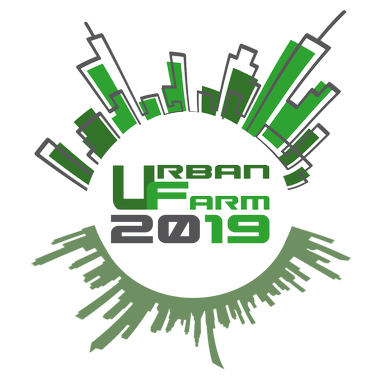
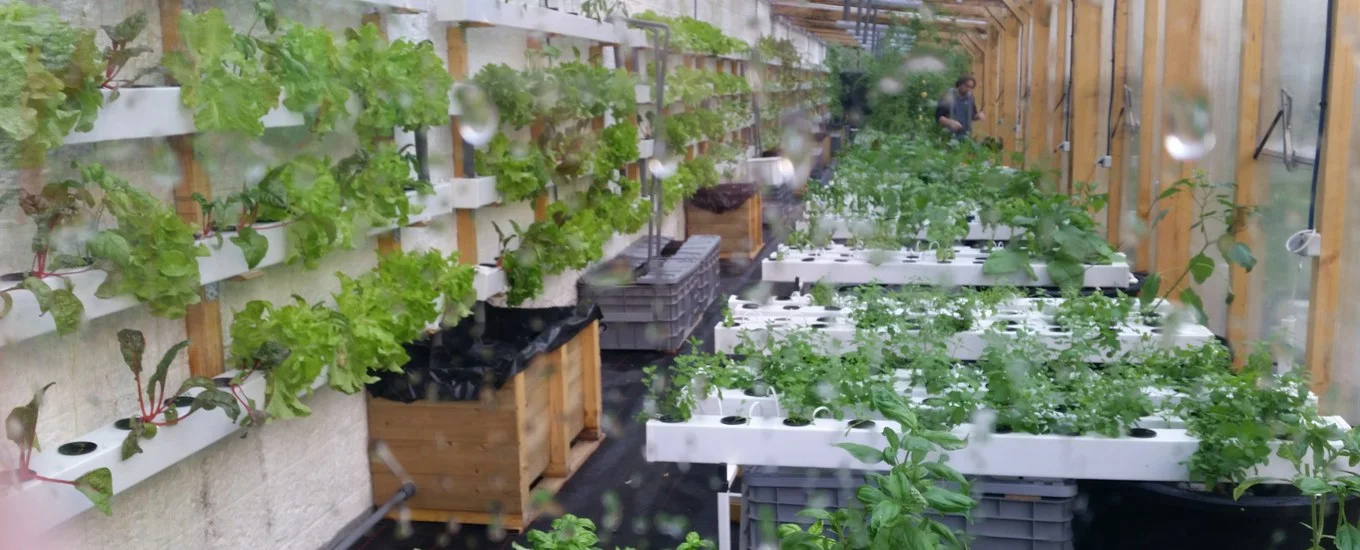
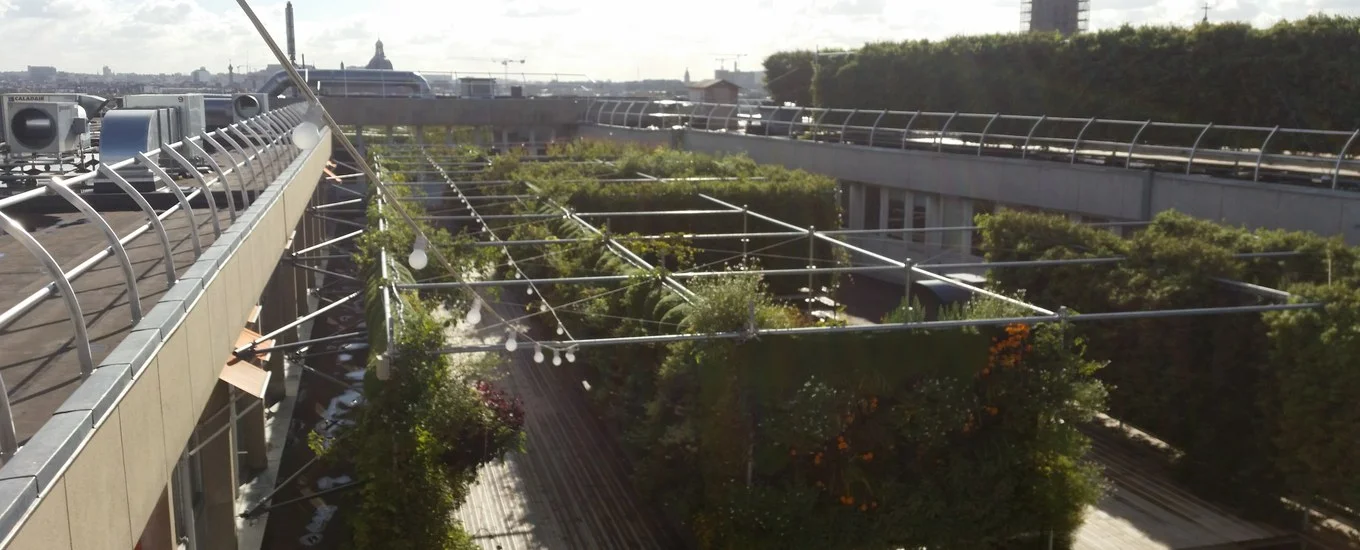
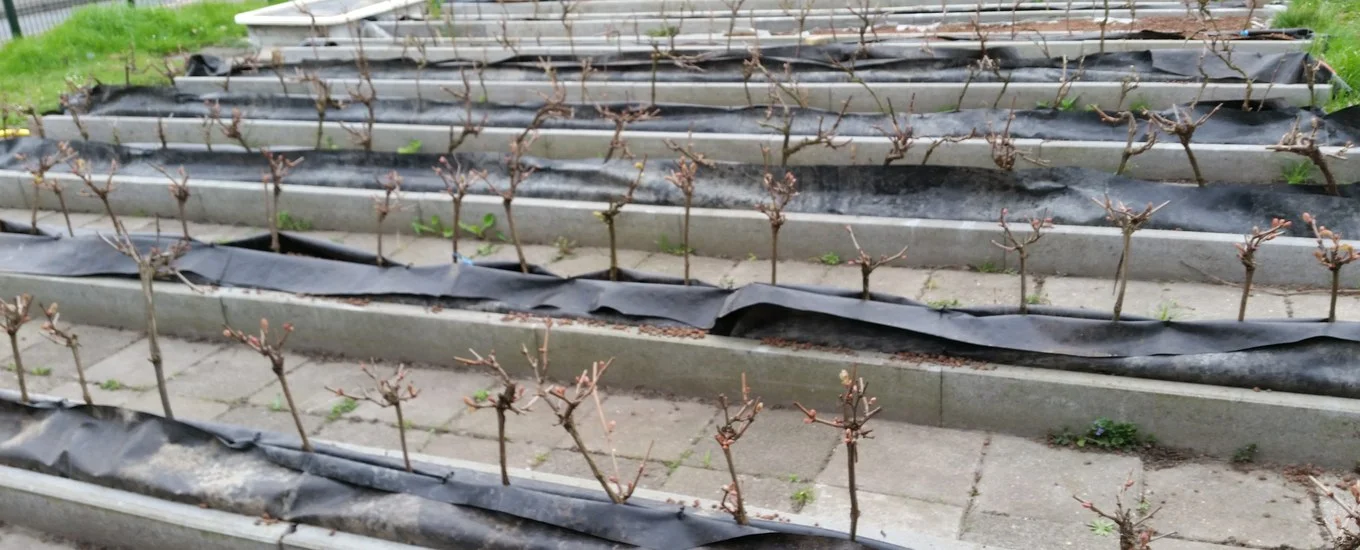
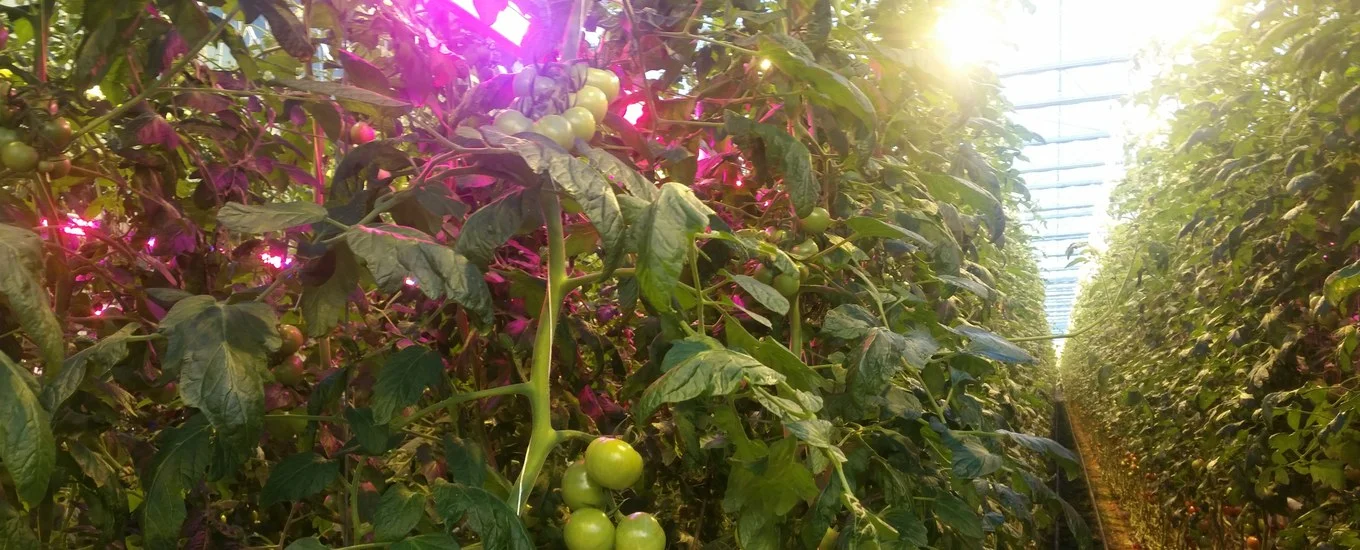
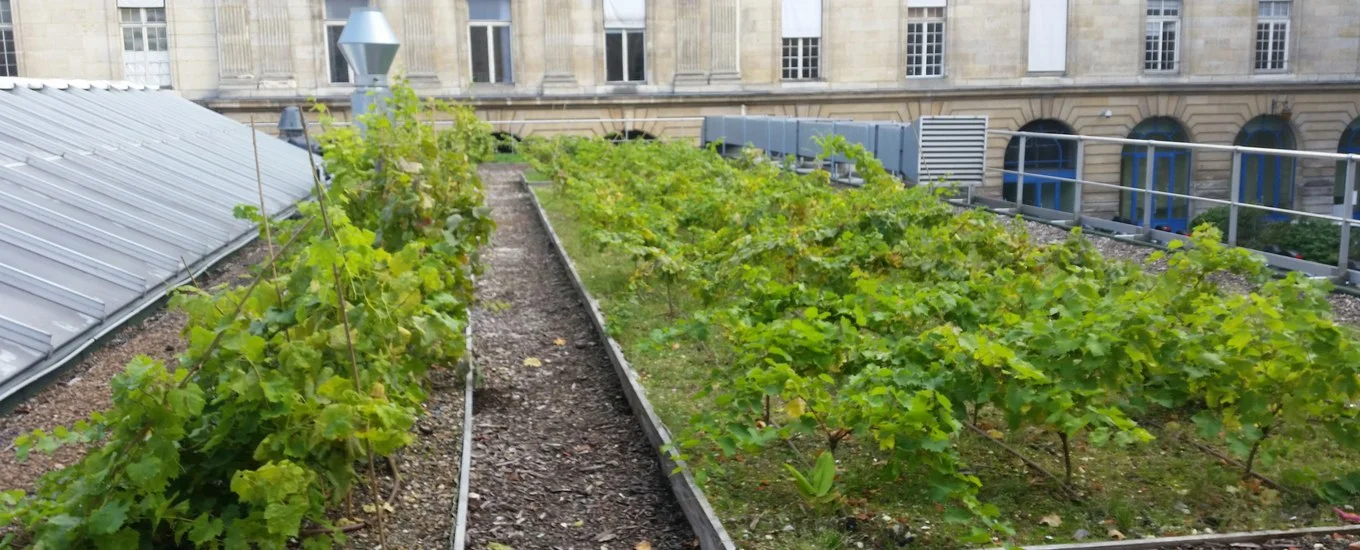
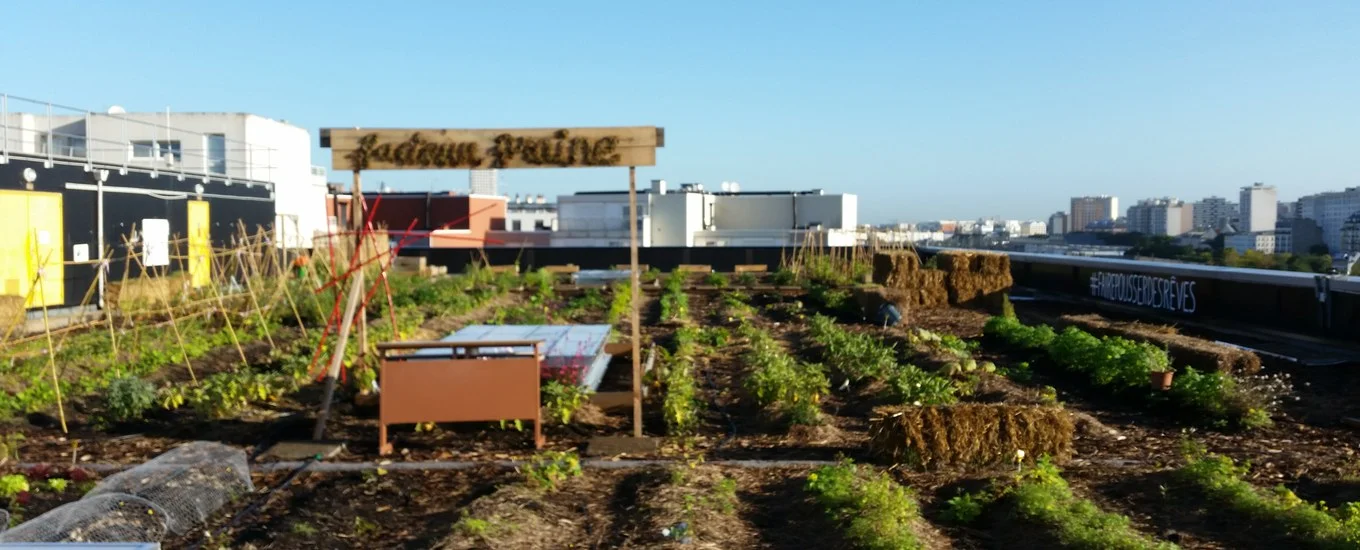
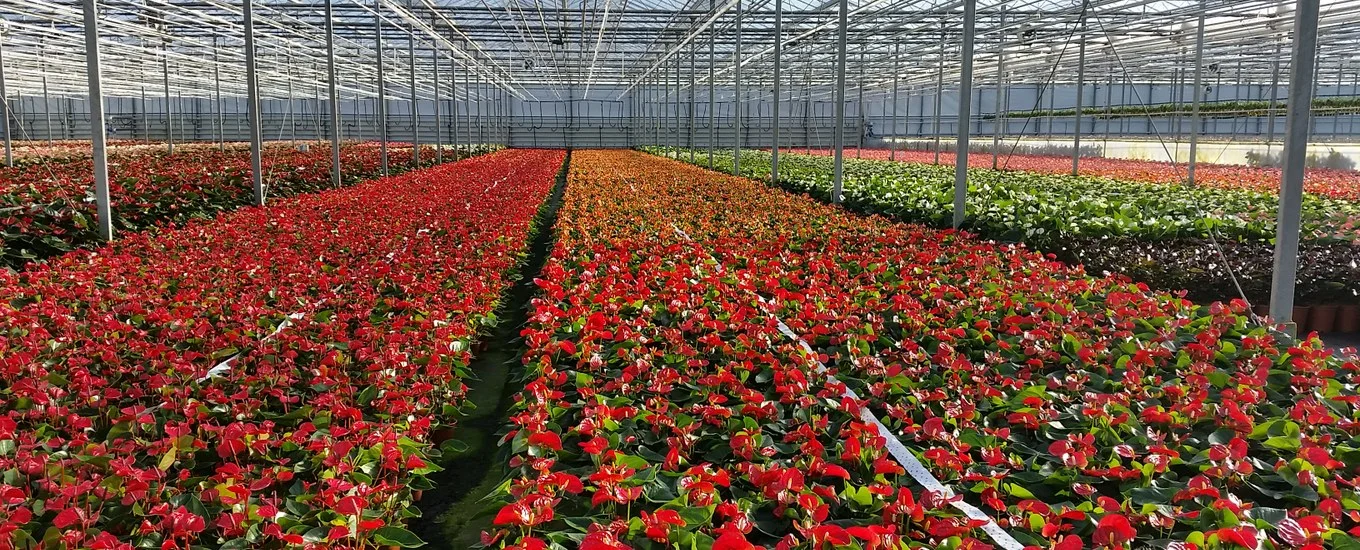
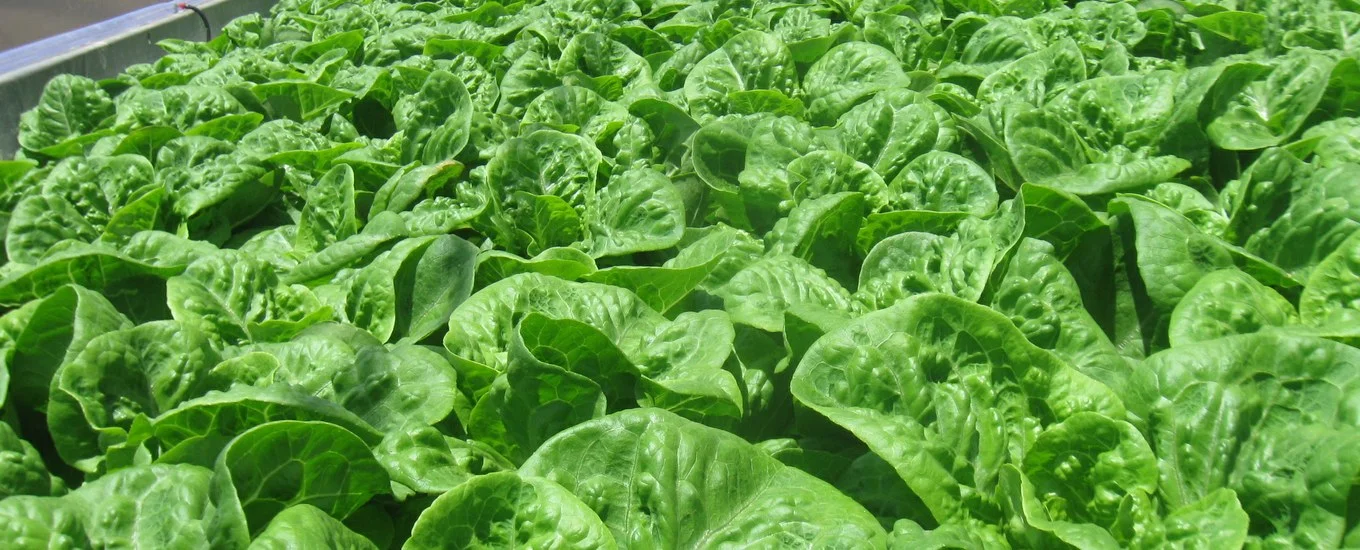
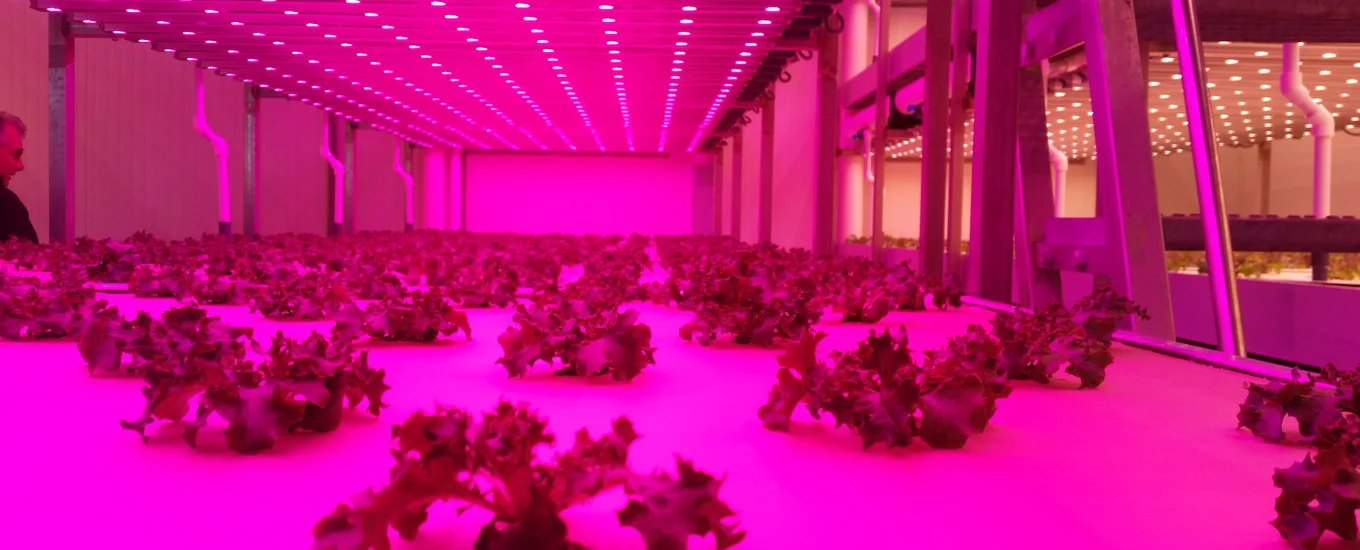
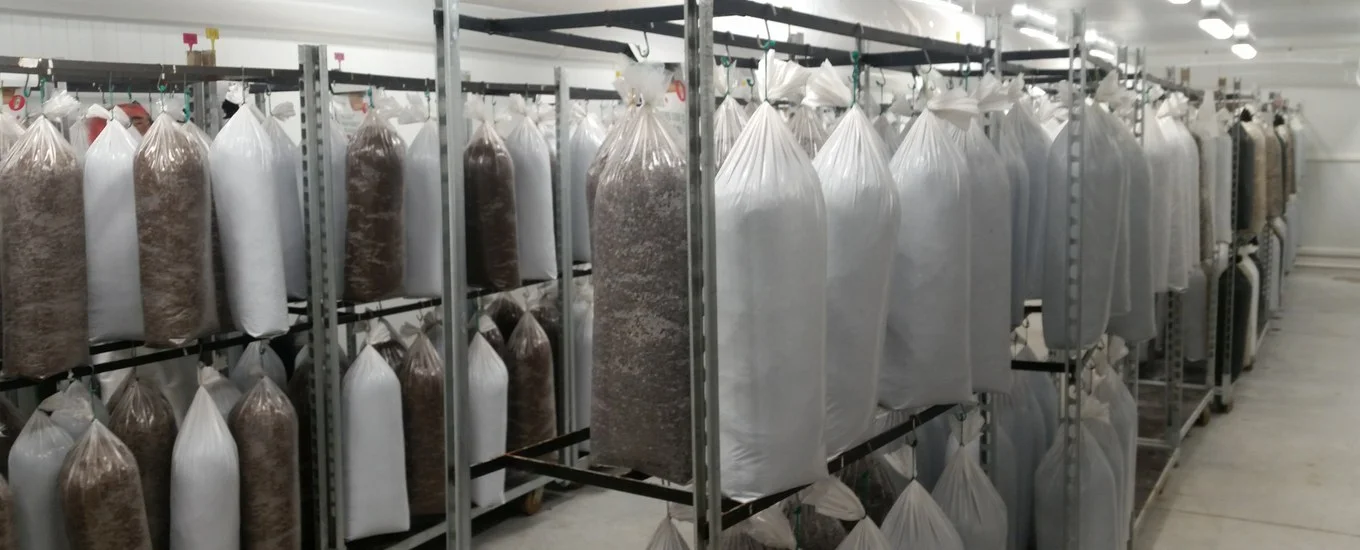
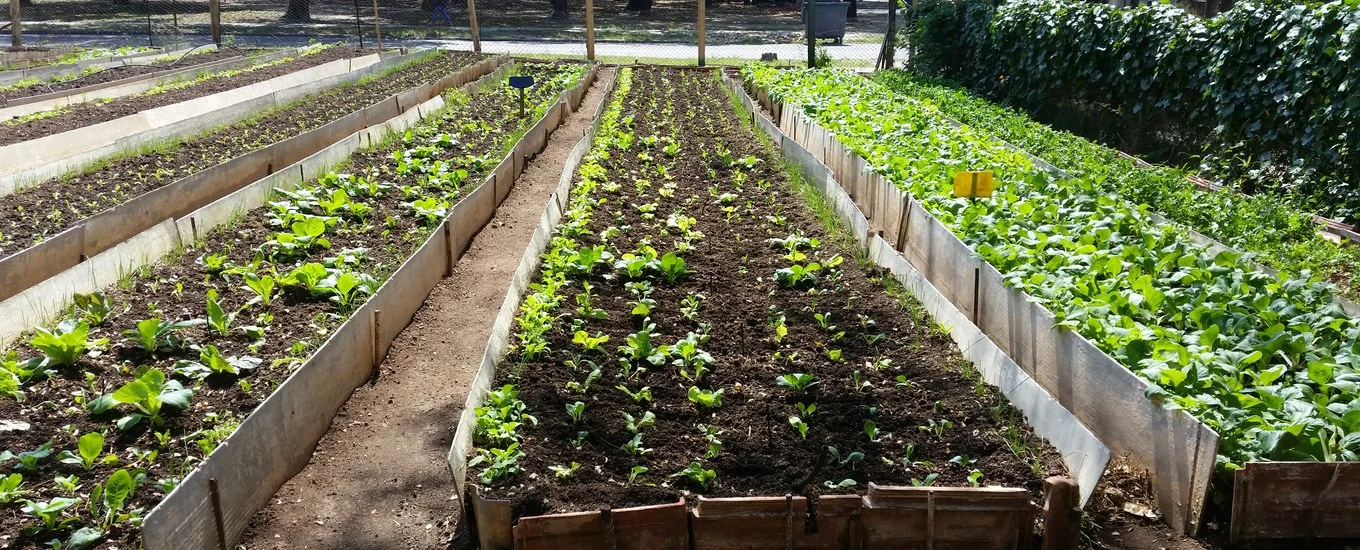
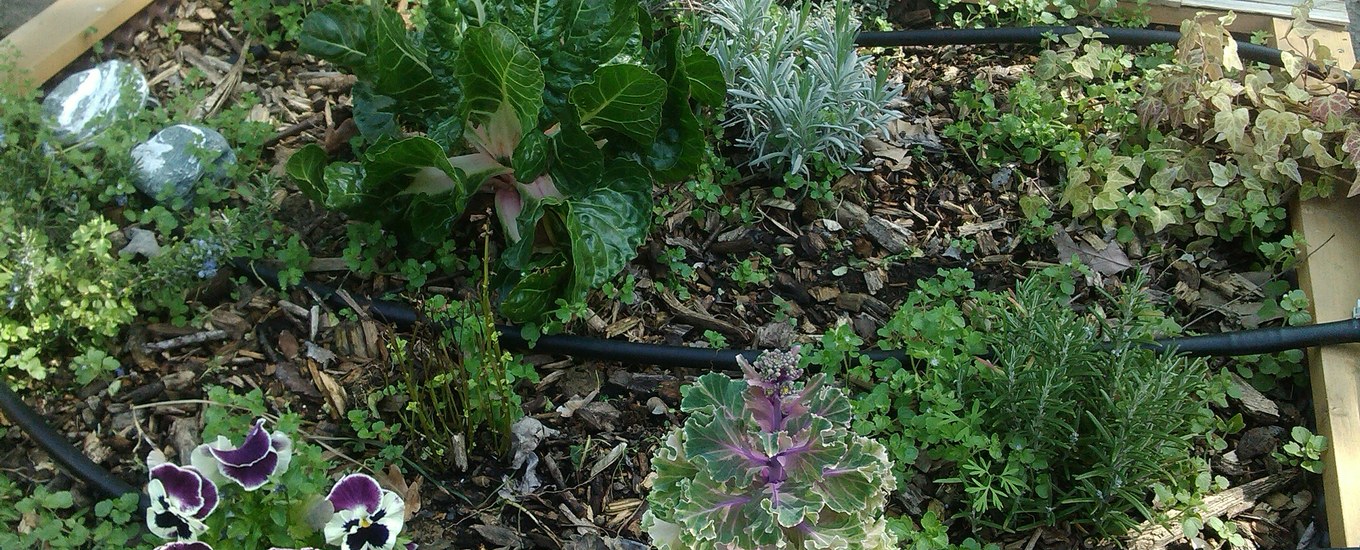
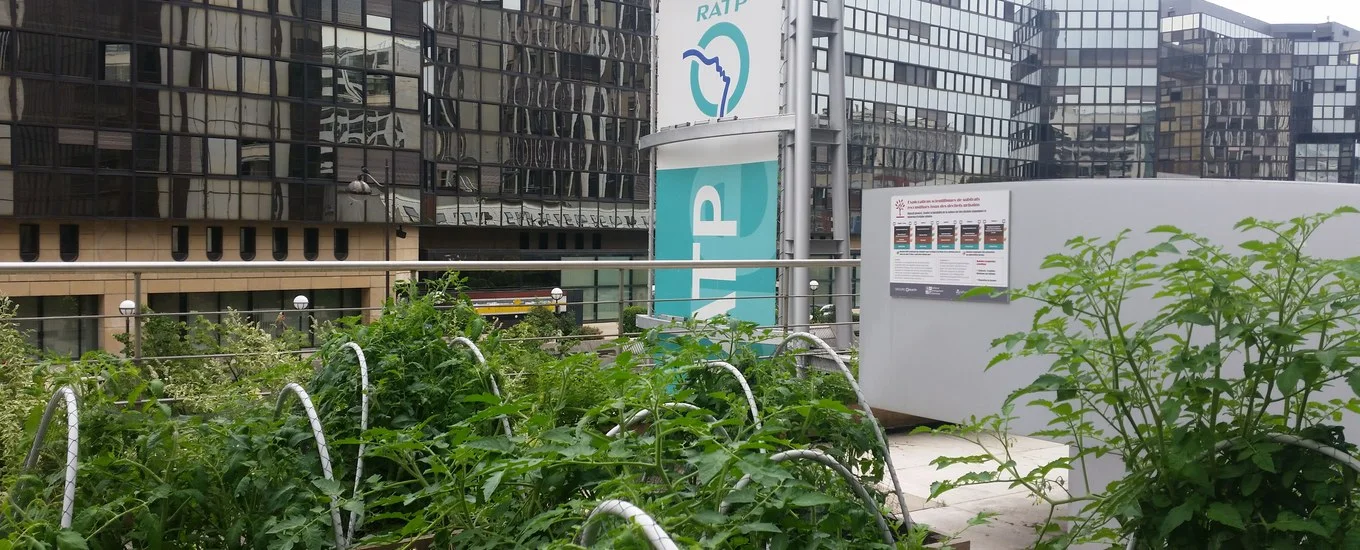
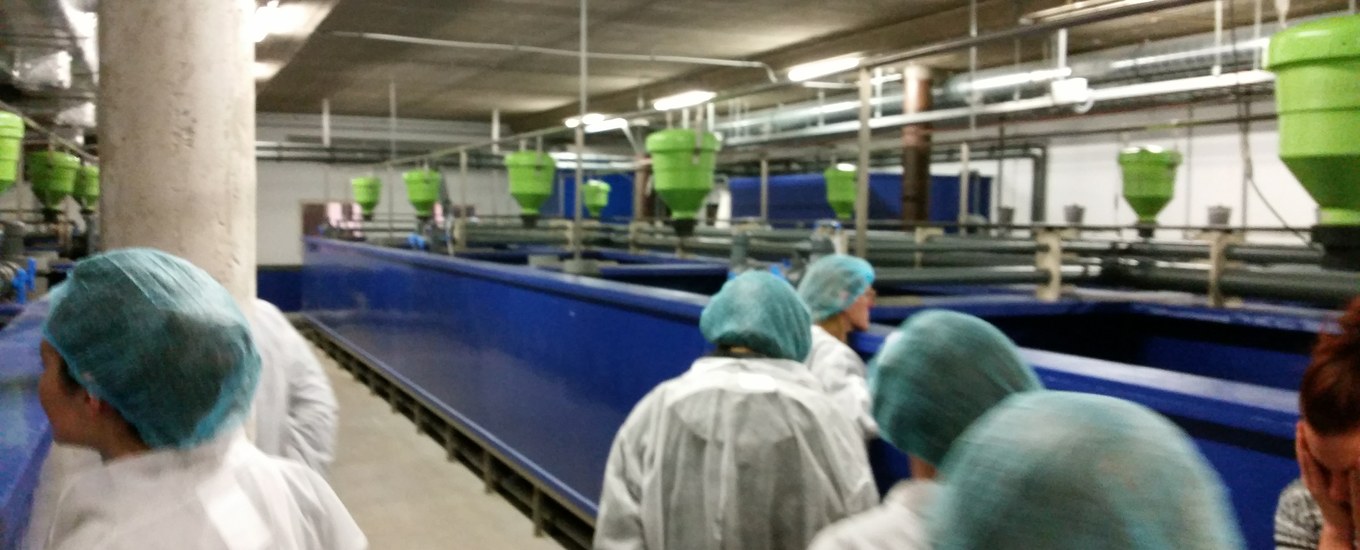
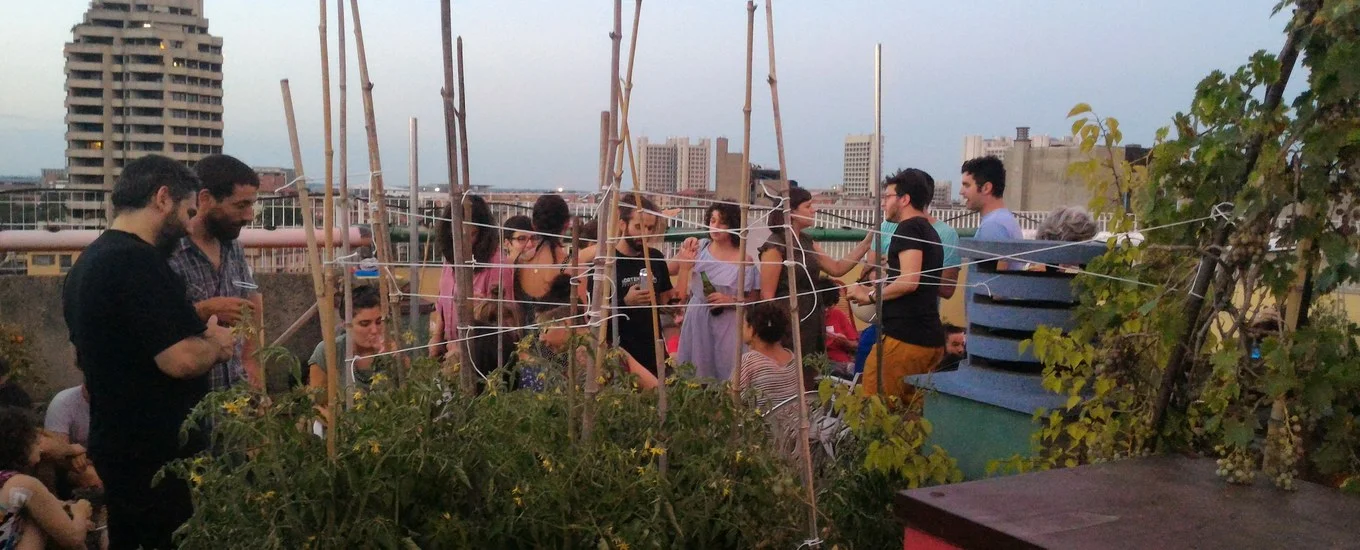















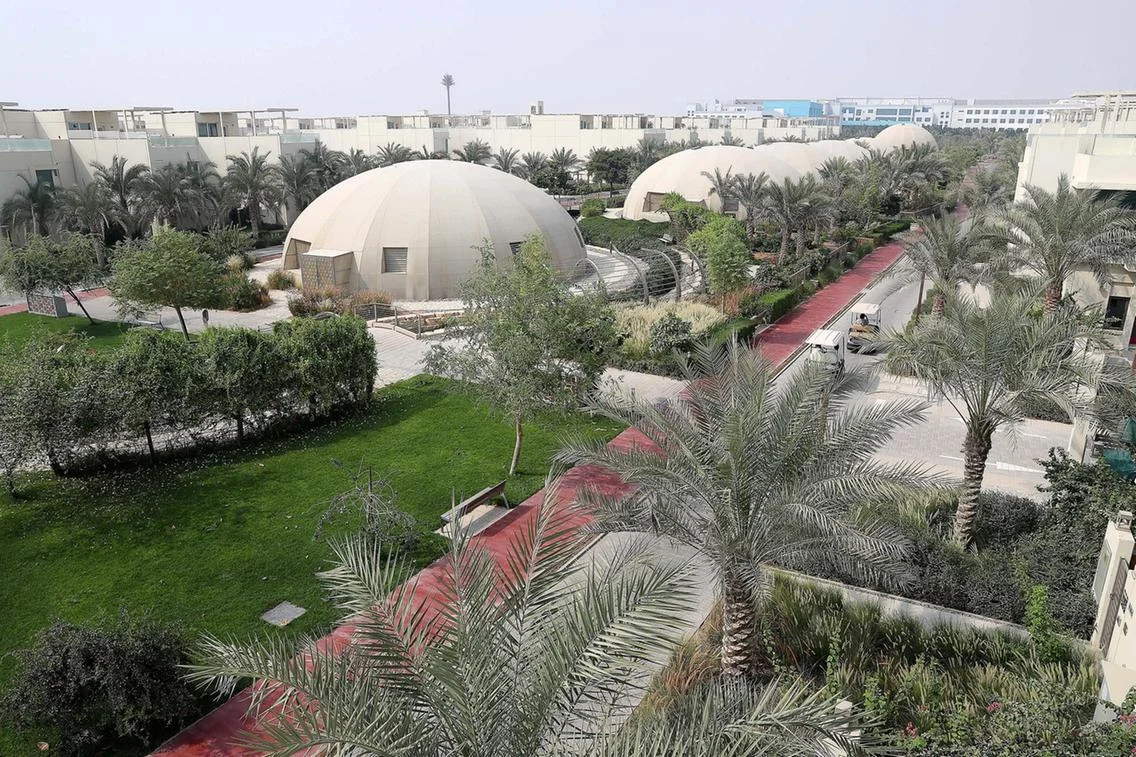



















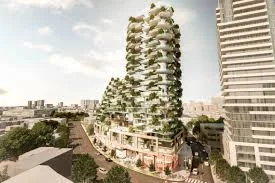
![[Image: Brisbin Brook Beynon]](https://images.squarespace-cdn.com/content/v1/57c8695d5016e11e71be1d83/1535869663666-WOXUB9PD0TNXISVYQH4O/Image+Brisbin+Brook+Beynon-1.jpg)
![[Image: Brisbin Brook Beynon]](https://images.squarespace-cdn.com/content/v1/57c8695d5016e11e71be1d83/1535869604869-VLL0DOMYK1S75RXI4QQF/Image+Brisbin+Brook+Beynon-2.jpg)
